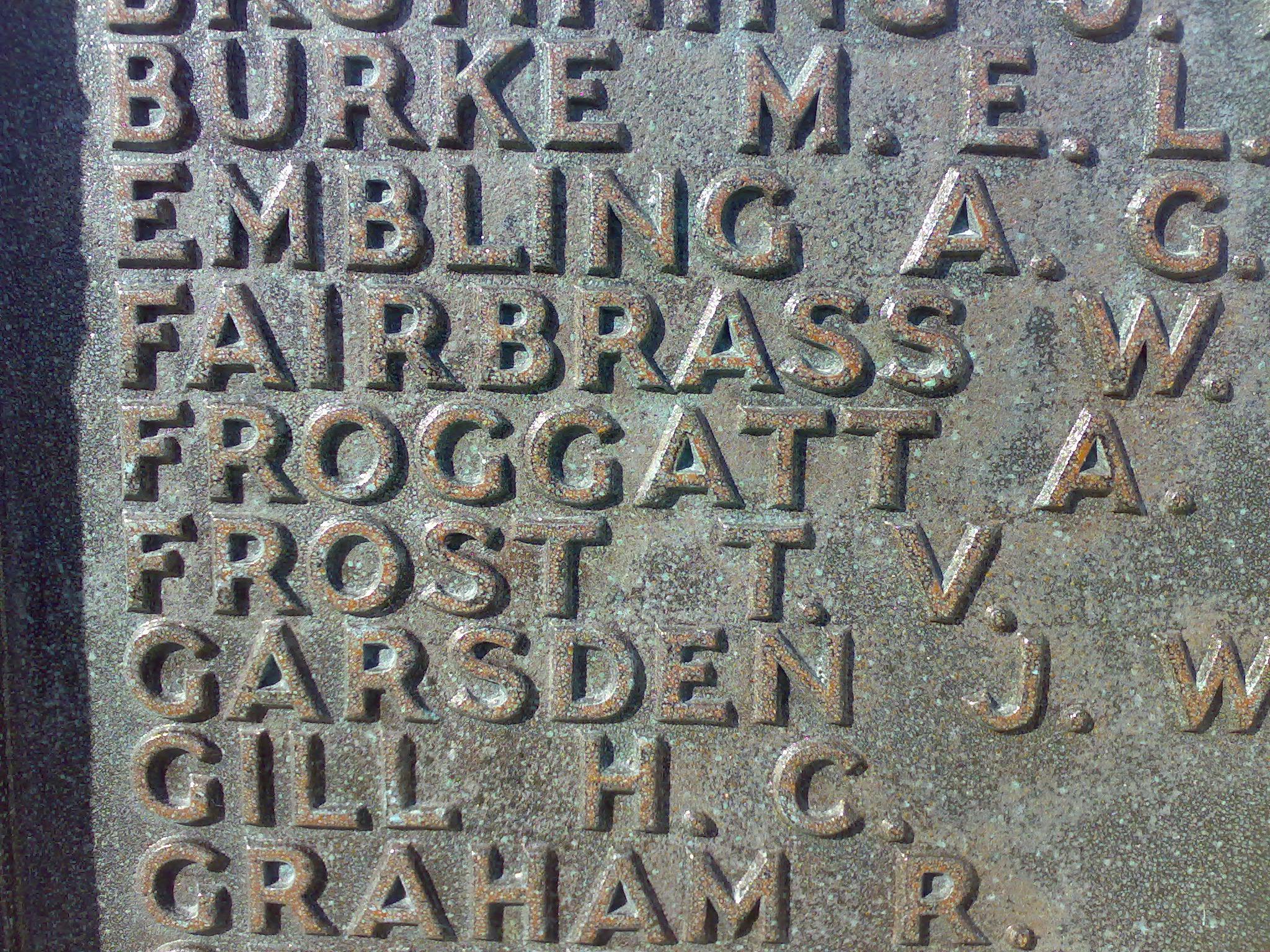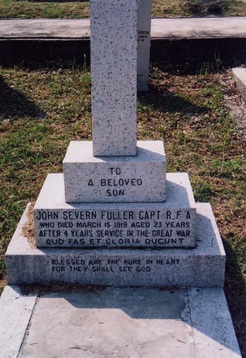|
Private 32496 Albert Edward Eggleston |
|
3rd Bn, Leicestershire Regiment. Died at Home 10th October 1916, Aged 24. Buried at St. Leonard's, Hoton (Headstone now removed to perimeter of churchyard). Additionally Commemorated at Loughborough Churchyard with special memorial.
|
|
Albert Edward Eggleston was born in Hoton, Leicestershire, in 1892, the son of William Arthur Eggleston and his wife Mary, known as 'Polly' (née Derrick). Albert's parents were married on Christmas Day 1885 at Holy Trinity Church, Wysall, Nottinghamshire. When Albert was born his parents had only just moved from Widmerpool Road, Wysall, to Loughborough Road, Hoton. Albert's father was a farmer and carrier and also a Methodist preacher. Albert had four brothers William, John, Clarence, and James and two sisters Mary and Frances. In 1911 Albert and his brothers John and Clarence were all working on their father's farm. Albert's older brother Willam now ran his own farm at Barrow on Soar.
As Albert's service papers have not survived his date of enlistment is not known but he joined the 3rd (Reserve) Battalion of the Leicestershire Regiment as Private 32496. The 3rd Battalion was a training unit primarily for the two regular battalions and it remained in the UK throughout the war. Within a few days of war being declared it moved to Portsmouth but by May 1915 was in Kingston upon Hull for duty with the Humber Garrison. The Humber was heavily defended, not only by land based artillery but also from the air. Two new forts were built, one on Sunk Island and another at Killingholme Haven. Albert died at Patrington Hospital, near Spurn Point, Holderness, Yorkshire, aged 24, on 10th October 1916. He was buried in the churchyard of St. Leonard's Church, Hoton, Leicestershire. Headstones in St. Leonard's churchyard were moved to the edge of the graveyard in the 1960s but after the church closed in the 1980s they were moved to Loughborough Cemetery. Hoton's roll of honour was moved to St. Andrew's Church, Prestwold. After Albert died his parents moved to Hillside, Sysonby, Melton Mowbray. |
|
Corporal 4849179 Henry David Ellis |
|
Died of Wounds 19th February 1918, Aged 27. Buried St. Sever Cemetery Extension, Rouen, VI. K. 6A. |
|
Henry David Ellis, known as 'Harry' to his family and friends, was born in 1890 in South Weald, Brentwood, Essex. He was the son of John Ellis, a carpenter, and his wife Mary Kate (known as 'Kate', née Mynott) who were married at St. Andrew's Church, Heybridge, Essex, on 27th November 1874. Harry had two brothers Arthur and Frank and six sisters Katie, Ethel, Alice, Agnes, Rosina, and Lilian. In 1891 the Ellis family lived in Melton Road, South Weald, but by about 1898 had moved to 5 Radcliffe Road, Chelmsford.
In 1911 Harry was no longer living at home but was boarding in the household of Frederick Seymour, tobacconist and hairdresser dealer, at 50, The Grove, Bedford, and working as a hairdresser. On 2nd January 1915 he married Honor Heard at the Church of St. Mary the Immaculate, New London Road, Chelmsford, and their son Eric David was born in Chelmsford on 4th September 1916. Harry's father died the following year, on 30th October 1917 aged 67. Harry's date of enlistment is unknown as his service papers have not survived but he joined the 1st Battalion of the Essex Regiment as Private 16897 and was subsequently promoted to Corporal. It is likely that Harry was not sent abroad until 1916 and he may have been part of a very large draft of 447 Ordinary Ranks which joined the battalion at Ville Condé on 13th December 1916. On 14th December the reinforced battalion entrained for Longpré and marched to Montagne, going into Corps reserve. Training took place until the 10th January 1917. On 11th January the battalion entrained at Airaines for Corbie where they stayed until 14th January. Over the next two days they marched via Meaulté and Carnoy to Guillemont. Three trench tours took place during the rest of January, with breaks at Guillemont and Carnoy. A further trench tour at Les Boeufs took place at the beginning of February, after which the battalion moved to Cardonette for nine days' training. On 19th February the battalion marched to La Neuville. They then entrained at Corbie for Plateau and marched to Fregicourt. After two days holding the front line in the Sailly-Saillisel sector the battalion marched to Trônes Wood, entrained for Plateau and marched to Bronfay. After two days in Brigade reserve at Combles the battalion returned to the front line at Sailly-Saillisel. Relieved on 2nd March they proceeded to Trônes Wood and entrained for Bronfay Camp before marching to huts at Méaulte. From 5th-18th March the battalion underwent training for open warfare. On 19th March they entrained at Edge Hill for Hangest-sur-Somme and marched to Montagne-Fayel where training continued. Between 29th March and 12th April the battalion moved via Picquigny, Flesselles, Beauval, Mondicourt, Ivergny, Humbercourt and Fosseux to Arras and went into the front line at Monchy-le-Preux. On 14th April the battalion took part in an attack on the German line and suffered 661 casualties. The remains of the battalion sheltered in caves at Arras before forming a composite battalion with the Newfoundland Regiment. Between 24th and 27th April the composite battalion moved via Simencourt and Gouy to Bayencourt where a draft of 125 reinforcements joined them. In early May the battalion marched to Saulty and went by train to Arras. After a short period in reserve and three days training at Berneville the battalion moved back to the Arras front and complted a trench tour at Orange Hill. On 25th May they came under considerable enemy shell fire which caused 61 casualties. After another trench tour in early June they moved by train to Montrelet for training until 26th June. On 27th June the battalion marched to Doullens, entrained for Hopoutre and marched to Proven. On the next day they moved to Rivoli Farm for work on the Yser Canal. During July there was one trench tour on the canal bank and periods in camps at Proven, Eykhoek, Crombeke, and Haringhe in training for the forthcoming offensive. From 26th-28th July the battalion provided carrying parties to the front for the Guards Division, during which heavy enemy barrages caused many casualties. In early August the battalion completed a support line trench tour, followed by sessions in camps near Wippe and Woeston practising for an attack. In the evening of 15th August they proceeded by track to Boesinghe and then by duckboards to the assembly position south of the River Steenbeck. In the battle that followed on 16th the battalion suffered 124 casualties. After a rest at Boesinghe and three days in the support line the battalion spent time in camps at Elverdinghe and Wippe before marching to Putney Camp at Proven for refitting and training. During September the battalion was in training at Putney Camp and Herzeele before entraining at Proven for Dulwich Camp and going into the trenches. October began with the battalion at H Camp for cable burying at Boesinghe and repairing infantry tracks. From 7th-8th October the battalion provided carrying parties to the Canal Bank and then entrained at Elverdinghe for International Corner and marched to Suez Camp. After training until 15th October the battalion marched to Pesehoek, entrained for Saulty and marched to billets in Pommier. Training continued here until 16th November. On 17th November the battalion marched to Boisleux-au-Mont, entrained for Peronne and marched at night to Moislains. From Sorel-le-Grand they marched on 20th November to the assembly point west of Gouzeaucourt. A battle began over two days with the battalion taking part in the push toward the St. Quentin Canal in order to seize crossings at Marcoing and Mesnières. A crossing was finally effected but the battalion suffered 165 casualties. After holding the new line the battalion was withdrawn to Marcoing and then sent to trenches north-west of the town. A German counter-attack on 30th November cost the battalion a further 110 casualties. Relieved on 5th December the battalion entrained at Etricourt for Mondicourt and marched to Sus-St.-Léger for twelve days training. Between 18th and 20th December the battalion marched via Flers and Wambercourt to Royon where training continued until 2nd January 1918. The battalion then moved via Champagne-le-Boulonnais to Boisdinghem for training until 16th January. The remainder of January was spent at St. Jean and in the Bellevue area, draining back areas and providing carrying parties. On 1st February the battalion moved to the front at Passchendaele where it was subjected to enemy shelling, sniping and machine gun fire. Following this it moved to billets at Wardrecques. The point at which Harry was wounded is unknown but he was taken to a hospital at Rouen where he died, aged 27, on 18th February 1918. He was buried in St. Sever Cemetery Extension, Rouen, Grave VI. K. 6A. Harry is commemorated on the Civic Centre Memorial, Chelmsford, and on the War Memorial at Church of Our Lady Immaculate in New London Road, Chelmsford. On 26th June 1919 Harry's widow, Honor, married Charles Frederick Allcock at All Saints Church, Loughborough. The couple later lived at 20 Church Gate, Loughborough. |
|
|
|
Able Seaman J/14283 Harry Bernard Emerson |
|
|
H.M.S "Amphion" Royal Navy. Died of Pneumonia 4th September 1914, Aged 20 Buried Loughborough Cemetery 44/107. |
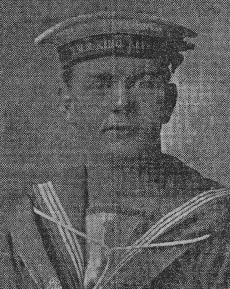 |
AMPHION SURVIVOR'S DEATHHarry Bernard Emerson who was better known as Harry Adams the step-son of Mr. and Mrs. Adams of 45 Storer Road, Harry passed away at the Haslar Royal Naval Hospital. Deceased who was an able-seaman, was on board H.M.S. Amphion when that vessel struck a mine and foundered, and although the explosion killed nineteen of the German prisoners whom Adams was engaged in guarding, he escaped without injury. August 1914 he came home on 48 hours' leave and at that time complained of the fumes he had inhaled, which affected his appetite and prevented him sleeping. On his return to Southampton he was drafted to another ship, and while on board he contracted pneumonia, which necessitated his removal to Gosport Hospital, where he passed away at the age of twenty years. The funeral took place at Loughborough cemetery on Tuesday where a large number of people had assembled to witness the last rites. Disappointment was expressed by several that the deceased was not accorded naval honours, but it is understood that it was the express wish of the family that it should be of a quite unostentatious character. The officiating minister was the Rev. R. H. Hanford, and the coffin was followed by the parents of the deceased, his grandparents, sisters, and nearest relatives.Harry Emmerson joined the Royal Navy as a boy in 1911 on Ganges 2. He spent time following this on HMS Commonwealth, Formidable, King Alfred and Talbot. Following this period he became an Ordinary Seaman and went back to the King Alfred. Afterwards he qualified as Able Seaman in 1912 and then went HMS Vivid 1. After a short spell there he was then sent to HMS Amphion until it was sunk 36 hours into WW1 on 6th August 1914. Fortunately he was one of the survivors and ended up on the Dido (Faulknor). |
|
|
Sapper 25940 William Edgar Fallows |
|
91st Field Coy. Royal Engineers. Died of Wounds 7th February 1916, Aged 25. Buried Bethune Town Cemetery IV. H. 94
|
|
William Edgar Fallows was born in 1890 in Leicester, the only son of Harry Fallows and Mary
Fallows (nèe Laffar). William had three sisters Emma, Ellen and Florence and their father
Harry worked as a bill poster, eventually running his own bill posting company from
Loughborough. Their parents had married in Leicester in 1888. From 64 Upper Charles Street
in Leicester (1891) the family moved to 115 Albert Road, Blackpool (1901). By 1911 the family
was living at 35 Ashby Road, Loughborough but without William's mother. William's mother
had left her husband and family and was living alone at 2 Court H, Upper Charles Street,
Leicester, earning her living as a cardboard box maker. Meanwhile, William's paternal
grandmother Emma Fallows had moved to 35 Ashby Road, Loughborough and was looking
after her son and his children. William, who was living with his father and grandmother, was
now working as a machine hand. His father later moved to 17 Derby Square. William enlisted at Leicester and joined the 91st Field Company of the Royal Engineers as Sapper 25940. The 91st Coy was with the 24th Division of the Army until January 1915 when it moved to the 15th (Scottish) Division. The units initially began to assemble in the Shoreham area of Sussex. Early days were somewhat chaotic, the new volunteers having very few trained officers and NCOs to command them, and no organised billets or equipment. By 22nd January 1915, however, the Division was in uniform for an inspection by Kitchener. By the early summer of 1915, the Division was considered to be ready for France and William went on 6th September. The 91st Coy was in action at the Battle of Loos in September/October 1915. Having survived the Battle of Loos William was unfortunately wounded in the trenches near Bethune and died of his wounds on 7th February 1916. He is buried in Bethune Town Cemetery Grave IV. H. 94. On Wednesday 7th February 1917 the Leicester Mercury published the following notice. 'In Memoriam: FALLOWS: In loving remembrance of my dear son, Sapper W.E. Fallows, R.E., who died of wounds in France, Feb.7th 1916. But though he died so far away his memory is with his mother every day. From his loving Mother and Sister Flo.' |
|
Lieutenant Edgar Faulks |
|
|
Royal Army Medical Corps. Attd. 95th Bde. Royal Field Artillery. Died of Wounds 26th September 1915, Aged 36. Commemorated Loos Memorial panel 136.
|
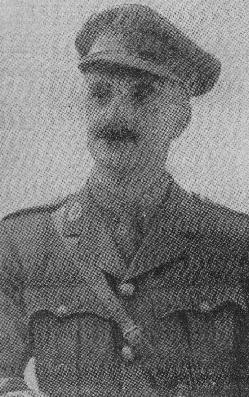 |
|
Edgar Faulks was born in Loughborough on 21st May 1878, the third son of Arthur Faulks and his wife Emma (née Attenborough) who were married on Boxing Day 1873 at the Primitive Methodist Chapel, Swan Street, Loughborough. |
|
|
Private 43918 Herbert Arthur Faulks |
|
10th Bn, Essex Regiment. Formerly 39286 Leicestershire Regiment. Killed in Action 9th August 1918, Aged 22. Buried Dive Copse British Cemetery, Sailly-le-Sec, III. F. 1.
|
|
Herbert Arthur Faulks was born in Market Rasen, Lincolnshire in 1895. He was the son of William Faulks, a tailor from Market Rasen, and his wife Clara (née Monk) who were married at Emmanuel Church, Loughborough, on 23rd June 1894. Not long after Herbert was born his parents moved from Market Rasen to 7 Queen Street, Loughborough, and at the turn of the century Frank Monk, Herbert's uncle, who was a barber, lived there with the Faulks family.
On 17th June 1899 Herbert's baby brother Frank, aged 22 months, was burnt to death in a fire at 7 Queen Street. The baby had got hold of a box of matches and set his cot on fire. Herbert and Frank's father was so distraught by the tragedy that he had to be taken to the Leicestershire and Rutland Asylum, Victoria Road, Leicester. A few weeks later another son was born to Herbert's mother and this new baby brother to Herbert was also called Frank. By 1911 Herbert's mother had moved to 20 Devonshire Square with her two sons, but there is no evidence that Herbert's father ever recovered enough to return home. Herbert's mother later became an office caretaker. When Herbert left school he was employed at Messrs. Grudgings needle factory in School Street, Loughborough. The date when Herbert enlisted is not known as his service papers have not survived, but he initially joined the Leicestershire Regiment as Private 39286 and was subsequently transferred to the 10th (Service) Battalion of the Essex Regiment as Private 43918. His date of transfer is also unknown. His medal records indicate that he was not sent abroad before 1916. The 10th Battalion of the Essex Regiment had been in France and Flanders since July 1915. If we assume that Herbert was transferred to the Essex Regiment before he was sent abroad there are a number of occasions from 1916 onwards when the 10th Battalion received drafts of reinforcements. The first draft arrived on 13th March 1916 when the battalion was training at Franvillers. From 16th March - 1st April the battalion was in the trenches at Maricourt where they were intermittently shelled. During April the battalion continued with to work on the improvement of the Maricourt defences amid enemy rifle fire, tear gas and shelling. They also contributed digging parties for work on the light railway north-east of Bray, this work continuing after the battalion moved to Longpré on 1st May. Training then took place until 23rd May when the battalion marched to Corbie. From 24th May until 1st June the battalion was in brigade reserve at Bronfay Farm and Billon Wood, working on a tramline and mining. During June the battalion did a trench tour in the Carnoy sub-sector, dug a cable trench between Billon Wood and Maricourt, provided working parties and completed work at Carnoy. On 1st July, the opening day of the Somme Offensive, the battalion went into action in the Battle of Albert and were ordered to hold the Pommier line. This they did until 7th July when, on being relieved, moved back to Bronfay Farm and then to Grovetown Camp in the Billon Valley. Following tactical exercises the battalion proceeded on 14th July via Carnoy and Talus Boise to Longueval Trench and east and west of Bernafay Wood. After dealing with a large number of dead in Longueval Alley the battalion moved to east and west of Trônes Wood to work on strongpoints. By 18th July they had returned to Billon Wood to prepare for an attack. On 19th July the battalion moved up to Longueval and Delville Wood, where a battle was in progress, but their advance was halted after they suffered heavy casualties. The battalion was then withdrawn to Grovetown Camp. On 22nd July the battalion entrained at Edgehill Station and at Maricourt for Longpré-les-Saints-Coeurs. Two days later they entrained for Arques and moved to billets in Blaringhem. Training took place here, at Mont des Cats near Godswaerwelde, Estaires, Erquinghem-Lys and Bailleul until 24th August. On 25th August the battalion entrained at Bailleul for Dieval and marched to Chelers where training continued until 8th September. Between 9th and 11th September the battalion moved via Sibiville and Halloy to Acheux. Further training followed until 23rd September. On 24th September the battalion moved to Crucifix Corner, Aveluy, and on 26th went into the attack at the Battle of Thiepval Ridge. Two days later, with the enemy in retreat, the battalion moved to Forceville having suffered many more casualties. On 3rd October the battalion entrained at Belle Eglise for Candas. After six days training at Montigny-les-Jongleurs the battalion began a three-day march back to Albert. On 17th October they moved to the line at Courcelette and began digging assembly trenches. Between 21st and 23rd October they launched a successful attack and vigorously repelled enemy attempts to advance. At the end of October, after a break, the battalion completed work in the line for the Royal Engineers. For much of November the battalion was based in Albert, Warloy, and in bivouacs on Tara Hill while trench work was completed. After this the men marched over nine days via Vadencourt, Gezaincourt, Heuzecourt, Coulonvillers and Fontaine to Lamotte-Buleux where the battalion remained until 28th December in training. Turkeys for the battalion's Christmas dinner were obtained from Paris. By the start of the New Year 1917 the battalion had moved to the area of St. Riquier to continue training until 10th January. A four-day move to Gloster Huts in Martinsart Wood followed for working parties on the tramlines, and unloading stores. On 27th January the battalion moved to Warwick Huts for work under the Royal Engineers. February began with a trench tour, during which the battalion launched an unsuccessful raid on the enemy. After moving to Marlborough and Monmouth Huts on 11th February the battalion returned to the trenches, this time at St. Pierre Divion, and launched another attack which was successful on the Hessian line. February ended with working parties at St. Pierre Divion and Thiepval. During March the battalion made partially successful attempts to establish new strongpoints and made a very successful attack on an enemy trench before preparing for an attack on Irles. At Irles all objectives were achieved and held. After a rest at Wellington Huts the battalion moved over five days to Pissy and after entraining at Bacouel for Berguette, marched to Ham-en-Artois for training until 18th April. Towards the end of April the battalion moved via Béthune, Houchin, and Tangy to work on the Beaurains to Neuville-Vitasse road. May was spent on trench tours in the front, support and reserve lines, with some reorganisation, working parties and training which continued until 16th June. From 17th June-2nd July the battalion was training at Souastre. After a move by train from Mondicourt to Cassel and a march to Steenvoorde the battalion continued training and practising attacks until 28th July. A move to New Dickebusch and Castle Reserve Camps then took place in preparation for an attack in the area of Zillebeke Lake. The Battle of Pilckem Ridge took place on 31st July and was the opening day of the 3rd Battle of Ypres, also known as Passchendaele. In the days that followed the battalion was at Micmac Camp and Dickebusch Huts re-equipping and training until they made a return to the front line at Stirling Castle from 10th-14th August. From 18th August until 8th October the battalion was withdrawn for training at Roubrouck and St.-Jan-Ter-Biezen. On 9th October the battalion moved to Murat Camp in a new area nearer Poelcappelle. Firstly they made improvements at the line near Canal Bank before a trench tour there for two days; secondly they moved to Tunnelling Camp in the Cane Post area before going into the line there. On 22nd October they were in action east of Poelcappelle where they attacked and captured enemy positions. The end of October was spent at Tunnelling Camp and Poll Hill Camp and the beginning of November at Coldstream Camp, Baboon Camp, and Wijdendrift. After a return to the front line on 7th November the battalion spent five days at De Wippe Camp cleaning up, reorganising and training. The remainder of November was spent making improvements at Canal Bank, on another brief trench tour and on further training at De Wippe Camp. During December there was a further trench tour, six days at De Wippe Camp refitting and training, and a move to Emile Camp from where two companies buried cable near Wijdendrift and two companies worked on drainage in the Brombeek and Guyterbale Farm areas. On 17th December the battalion entrained at Elverdinghe for Proven and marched to Herzeele where they were in training until 27th December. At the end of December the battalion returned via Proven to work under the Royal Engineers in the Brombeek Valley. This work continued until 25th January 1918 when the battalion moved to Bapaume Camp until 6th February for refitting, reorganisation and training. On 7th February the battalion went by train to Noyon and marched to Grandrû before moving to Jussy and Clastres. From there the battalion moved to Remigny to repair billets and dugouts while two companies were sent to work at Essigny le Grand, both in the Aisne. On 14th February the battalion moved to Bethancourt. After four days one company was sent to Noyon and one to Golancourt. On 24th February the whole battalion moved to Rouez Camp and two days later went into reserve in the battle zone at Ly-Fontaine and Remigny. On 5th March the men went into the front, support and reserve trenches to work on trench improvements and wiring. Relieved on 19th March the battalion began preparing for an expected enemy attack. The German Spring Offensive opened on 21st March with a barrage on Ly-Fontaine and Remigny and the battalion was ordered to withdraw to the other side of the canal by Jussy. On 22nd the battalion took up a defensive position in front of Friers Failleul but were later ordered to withdraw to Rouez Camp. On 23rd the battalion took up a line through Frères Wood but was attacked by an overwhelming number of the enemy. Withdrawn to Commenchon and then Caillouel the battalion took up a strong line of defence with the remainder of the Division on 24th March, only to be shelled by the enemy. Between 25th and 31st March the battalion was withdrawn via Mondescourt, Baboeuf, Caisnes, and Nampcel to Gentelles. The cost of the German Offensive to the battalion, which had 328 casualties, was high. The first fortnight of April was spent in the line at Gentelles and on 12th April the battalion made a successful counter-attack north of Hangard. From 14th-23rd April training and reorganisation took place at Saint-Fuscien and Petit Cagny. On 25th April the battalion attacked the Bois de Hangard, but suffered 213 further casualties. After a few days reorganisation at Warlus the battalion was in reserve for an attack at Behencourt. A trench tour in the Lavieville line, trench work and training took up most of May. In June there were four trench tours and working parties in the Warloy sector. On 12th July the battalion was conveyed by bus to Picquigny for refitting and training until the end of the month. Training continued at Pont Noyelles until 6th August. On 8th August 1918 Allies opened an offensive with the Battle of Amiens and the battalion took part. Herbert, aged 22, was killed in action on the following day. Herbert was buried in Dive Copse British Cemetery, Sailly-le-Sec, Grave III. F. 1. |
|
Boy 1st Class J/27543 Philip Albert Faulks |
|
|
H.M.S. Hawke Royal Navy. Killed in Action 15th October 1914, Aged 17. Commemorated Portsmouth Naval Memorial Panel 3.
|
|
|
Philip Albert Faulks was born in Loughborough on the 5th June 1897. He was the son of John Thomas Faulks and his wife Ellen Allwood Faulks (née Simmons) who were married at Holy Trinity Church, Loughborough, on 11th November 1884. When Philip's parents were married his father was working at Shelthorpe Farm with Philip's grandfather, but by 1901 Philip's father had become a general carter and the Faulks family had moved to 3 Factory Street, Loughborough.
Philip had two brothers, William and George and two sisters Lydia and Ada. Another sibling died young. In 1911, aged 13, Philip was a grocer's errand boy and living at 3 Russell Street, Loughborough, with his father and three of his siblings. His father was now employed as a Borough Council labourer. His mother, Ellen had died in 1908 aged 44. Philip joined the Royal Navy on 18th September 1913 and initially held the rank of Boy, 2nd Class. His service number was J/27543 and his address according to Naval Records was then 4 Cobden Street, Loughborough. He was trained on the HMS Ganges a training establishment at Shotley, Suffolk, until 14th April 1914 and was then promoted to Boy 1st Class and sent to HMS Hawke, an Edgar-class protected cruiser. Philip Albert Faulks was serving on board HMS Hawke, commanded by Captain Hugh Williams when in 1914, as part of the 10th Cruiser Squadron, the Hawke was engaged in operations in the North Sea. On the 15th October 1914 a German submarine torpedoed HMS Theseus, which was in the same squadron, and the Hawke. The attack on the Theseus was unsuccessful, but the Hawke sank within a few minutes and Captain Williams, 26 officers and 500 members of the crew perished, including Philip Faulks. Only 4 officers and 60 of the crew were saved. Philip Albert Faulks was just 17 when he died. His body was never recovered and he is commemorated on the Portsmouth Naval Memorial, Panel 3. |
|
|
Portsmouth Naval Memorial
|
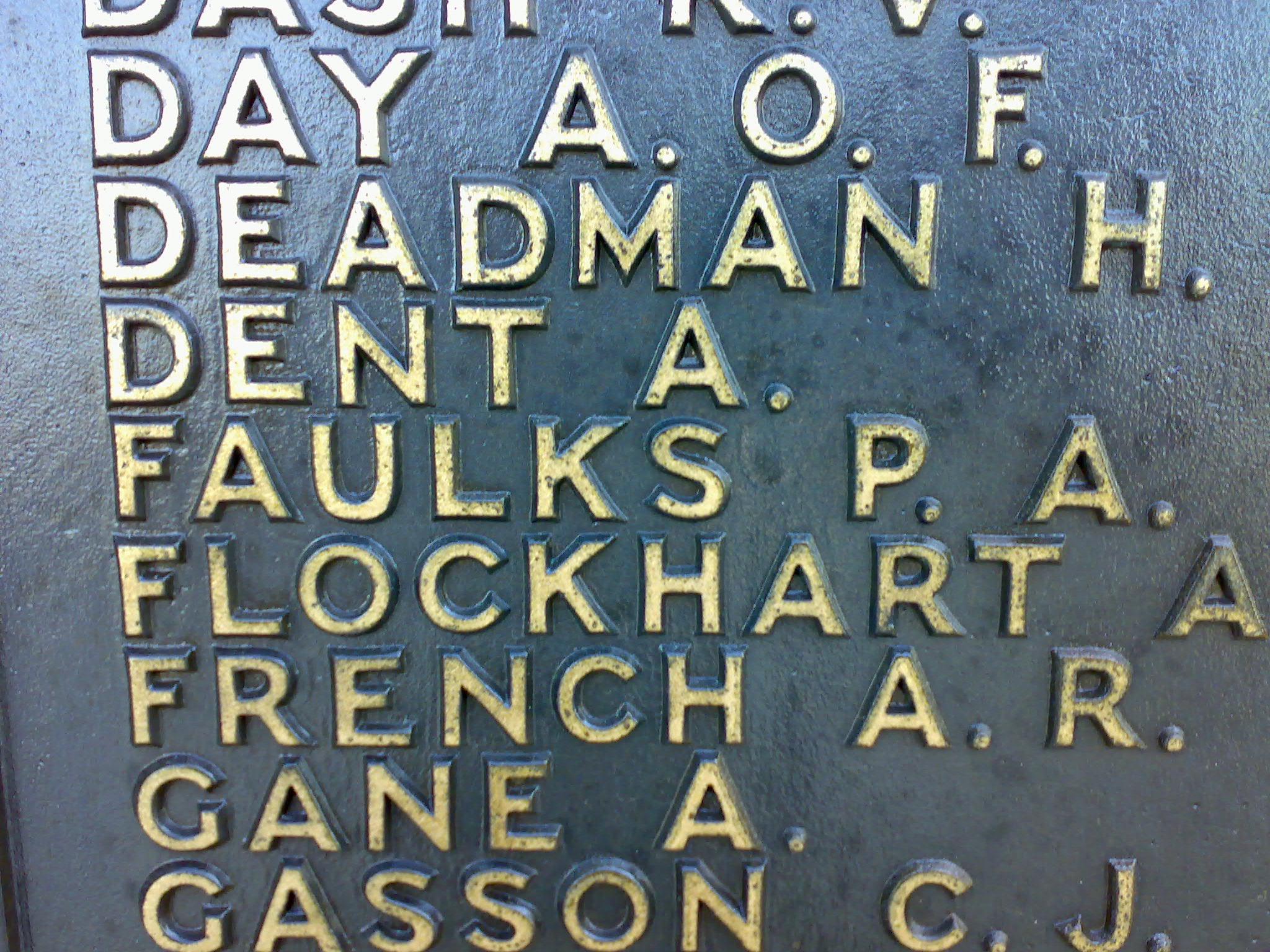 |
|
Captain (Brigade Major) |
|
|
Died at Home of Pneumonia 2nd November 1917, Aged 27. Buried St. Peter's Churchyard, Stutton, Suffolk. |
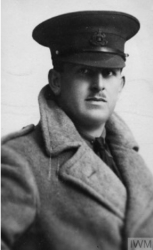 |
|
James Frederick Lorimer Fison was born on 23rd June 1890. He was the eldest son of James Oliver Fison, manufacturer of chemical fertiliser, and his wife, Lucy Maud (née Nash). James's parents were married at the Church of St. Mary and St. Clement, Clavering, by the bride's father the Reverend Frederick Gifford Nash, Vicar of Clavering, on 2nd July 1889. James had two brothers Frank and John and three sisters Madeleine, Florence and Sylvia. The Fison family lived at Stutton Hall, Suffolk, a fine Tudor House overlooking the Stour estuary.
James was educated at Charterhouse, Daviesites House, from Oration Quarter (Autumn term) 1903, to Summer quarter 1909. He was a Junior and Senior Scholar, Head Monitor and Classical Exhibitioner and a prominent athlete. While at Charterhouse James joined the Officers' Training Corps, progressing to Cadet Officer in the Junior Division and Captain of the Rifle Corps. He went up to Christ Church, Oxford, as a Scholar in 1909. He became President of the Common Room and represented the college at tennis and hockey. About this time his deeply religious interests were strengthened by the influence of the Charterhouse Mission at Southwark and Pusey House, Oxford, and he developed a devotion to the Church and a desire to serve his country. In the vacations he worked with the Boy Scouts in Suffolk. James was a frequent visitor to Loughborough where he had a number of close relatives on his mother's side. His aunt Elizabeth Jane Gifford Nash had married Walter Chapman Burder, horticultural engineer and owner of Messenger and Co. His maiden aunts Edith and Frances Nash and his uncle Thomas Nash also lived in Loughborough, as did in retirement his maternal grandparents the Rev. Frederick Gifford Nash and Sarah Nash. Whether James was ever employed at Fisons in Loughborough is unknown but as he was the heir apparent to the Fisons' empire some involvement seems likely. James was appointed to the position of Temporary Lieutenant in the 1/4th Battalion of the Suffolk Regiment on 1st December 1914. He joined the 1/4th Battalion at La Couture in France on 1st March 1915. In early March 1915 the battalion moved to Brigade reserve at Richebourg St. Vaast. On 8th March they moved to Lestrem and two days later took part in the Battle of Neuve Chapelle. On 13th March the battalion moved back to St. Vaast and proceeded to La Couture. They returned to the trenches at Neuve Chapelle from 17th-25th March before going to Lestrem for rest, reorganisation and training until 6th April. After a trench tour at Rouge Croix the battalion moved to Croix Barbée for twelve days training and attack practice. Between 25th and 27th April the battalion moved via Boeschepe, Westoutre and Ouderdom to the support trenches at St. Jean, near Ypres. Here they were heavily shelled before being withdrawn to Ouderdom. In May 1915 the battalion moved via Fletre and Merville to Croix Marmeuse for a trench tour at Port Logis and Port Arthur in the area of the La Bassée road. On 9th May they took part in the Battle of Aubers Ridge, a disastrous allied attack which failed. This was followed by participation in the Battle of Festubert. Between 9th and 18th May the battalion suffered 103 casualties. Following a break at Pont Riqueul and Bout Deville they returned to the Port Arthur trenches at the end of May. June was mainly spent in billets at Bout Deville with four days in reserve at St. Vaast. Much repair work was done to the trenches and a new communications trench was made. From 7th -14th July training took place at Pont du Hem and after this the battalion was in the trenches at Neuve Chapelle. In the first week of August the battalion was in billets in the Locon road between Zelobes and Fosse for inspections and physical drill and the rest of August and September were spent on sniping at the enemy and trench work. The battalion's October diary has been lost, but on 1st November the battalion was in the trenches near Croix Barbée before going into Brigade reserve. Between 10th and 14th November they were holding the front line. On 15th November they proceeded by bus to Verquin when the battalion was transferred from the Jullundur Brigade of the 3rd (Lahore) Division to the 46th Brigade, 15th (Scottish) Division. Training, a trench tour near Vermelles, and working parties filled the rest of November. December began with another trench tour before the battalion moved to Gosnay and then Raimbert for training until 12th January 1916. After returning by train and march to the area of Vermelles the battalion completed four trench tours during the rest of January. The enemy was very active with rifle grenades, trench mortar bombs and aerial torpedoes and also exploded a mine under the battalion's front line. Despite enemy activity large working parties repaired wiring and made trench improvements. The same activities continued during February and early March, with a break at Noeux-les-Mines, and a move to Annequin south at the end of February. On 22nd February 1916 the battalion was transferred to 98th Brigade, 33rd Division. After making trench improvements in the front line during the first week of March the battalion moved to Béthune for working parties and training. On 17th March they marched via Bouvray to Annequin north where they were issued with steel shrapnel helmets. On 22nd March the battalion moved to the front in the Cuinchy section, a line badly cut up with craters and on 24th March the enemy sprung a mine in front of A Company. At 2.00am on 25th March Lieutenant Fison, Sergeant Evered and a few men proceeded to attack the enemy who had occupied the further lip of the crater. Two of the enemy were killed, many were injured by grenades and the position regained. On 27th March the battalion moved to Annequin north and remained there until 2nd April when they moved to Annezin. Company training and inspections took place until 10th April when the battalion returned to Béthune. During the rest of April three trench tours took place, one in Annequin south and two in the Auchy right sector. There were also working parties for the Royal Engineers and wiring work amid machine gun and rifle fire. On 25th April a raiding party successfully attacked the enemy lines. On 26th April the battalion moved to Annezin for training until 4th May. In May there were trench tours in the Cuinchy right sector and working parties for the Royal Engineers including the 251st Tunnelling Company, with breaks at Annequin north. Training took place at Béthune from 29th May to 9th June and on 2nd June James Fison was awarded the Military Cross for his bravery on 25th March and on 16th June he was mentioned in Sir Douglas Haig's Despatches. At the time James was in command of a trench mortar battery. Training, working parties and trench work amid some severe enemy bombardment ensued until 21st June when the battalion moved to Gorre, Beuvry, and continued with similar work as well as completing tasks for the Royal Engineers. After a trench tour in the Village line at Cuinchy at the start of July the battalion began a seven-day move. They proceeded via Bellerive to Chocques, entrained for Amiens and marched to Raineville. From there they marched via Vaux-sur-Somme, Ville-sous-Corbie, and Méaulte to Bécordel, east of Fricourt. On 14th July, the first day of the Battle of Bazentin Ridge, the battalion went into the trenches in front of Bazentin-le-Petit and incurred heavy casualties. After being withdrawn to Shell Valley the battalion returned to the north-east corner of Bazentin-le-Petit Wood on 18th July and was heavily shelled. Relieved on 21st they moved to Mametz Wood but the wood was shelled with high explosives, shrapnel and tear and gas shells. The battalion then moved to Dernancourt for rest and training until 6th August. Casualties for July numbered 354. From 7th-12th August the battalion provided working parties for the Royal Engineers and were shelled. From 14th-19th August they were in the front line at Bazentin-le-Grand and again shelled. On 18th August James Fison, now a Captain, joined them in the front line and took over the duties of Adjutant. An attack was made on the enemy trenches, but after gaining some ground the battalion was outflanked and forced to retire. Casualties numbered 186. Relieved on 19th the battalion proceeded to a camp north-east of Méaulte. They returned to the trenches east of Bazentin-le-Grand on 25th August and provided carrying parties for the front line. August ended with another front line trench tour during which enemy shelling and bombardment caused 52 further casualties. On 31st August the battalion moved to a camp north of Dernancourt. On 1st September the battalion began an eleven-day march via Candas, Remaisnil, Boubers-sur-Canche, Monts-en-Ternois and Warluzel to Gaudiempré. Here training took place until 19th September. The rest of September was spent in reserve at Sailly-au-Bois, working on trench improvement. Training continued at Sus-St.-Léger from 3rd-18th October, after which the battalion moved via Corbie, Méaulte and Briqueterie to Trônes Wood for working parties. The month ended in the trenches east of Les Boeufs. After moving to Méaulte at the beginning of November the battalion entrained for Longpré on 9th and marched to the area of Caumont, Limercourt and Huchenneville for refitting and training until 3rd December. On 5th December they entrained at Pont-Remy for Maricourt and marched to Bray-sur-Somme. During December the battalion completed two trench tours north-east of Bouchavesnes and one south-west of Rancourt with breaks at Camp 17, Maurepas, and Camp 111 near Bray-sur-Somme. On 29th December they entrained for Longpré and marched to Villers-sous-Ailly for rest and training until 18th January 1917. On 19th January 1917 the battalion entrained for Edgehill, Dernancourt, and marched to Camp 12 and then on to Camp 18. From 23rd January - 6th March they were on trench tours near Bouchavesnes and Clery-sur-Somme, with breaks at Camp 19, Suzanne. On 7th March they moved to Camp 124 near Sailly-Laurette for training until the end of the month. On 8th March 1917, while on leave in England, James Fison married Charlotte Patricia Hazel Elliot, the daughter of Lieutenant Colonel W.H.W. Elliot, at Holy Trinity Church, Brompton, London. James returned to France and his wife went to live at Bluegates, Wherstead, Suffolk. At the beginning of April the allies were preparing for the Arras Offensive. The battalion marched over eleven days via Naours and Couin to Blairville-Ficheux and went into support on the Neuville-Vitasse to Henin-sur-Cojeul road. From here they carried out burial and salvage work. Two trench tours in the front line followed. On 23rd April the battalion took part in an attack on the Hindenburg Line as far as the Sensée River. 650 prisoners were captured but the battalion incurred 314 casualties. During the first two weeks of May the battalion was at Bretencourt, Douchy-les-Ayette and Boyelles, refitting and training. On 15th they returned to the front and took part in an attack on the Hindenburg Line on 20th May. On 31st May they moved to a camp at Hendecourt-lès-Ransart where they stayed for over three weeks training, relaxing and taking part in football, athletics and field firing competitions. They also attended a concert party by The Shrapnels. On 24th June the battalion returned to the trenches in the Hindenburg Line and were heavily shelled. On 30th June the battalion began a six-day move by train and march from Boyelles to Warlus. Here training and inspections as well as cricket matches and football took place until 30th July. From Warlus they then marched to Longpré and entrained for Adinkerke and marched to La Panne. On 3rd August they moved billets to houses on the sea-shore, with two companies taking over part of the coastal defences while two were training, with inter-company reliefs. On 17th August the battalion moved into Divisional reserve in Wellington Camp and on 20th to Queensland Camp west of Oost Dunkerke. From 23rd-29th August they went into the trenches in the St. George's sector, after which they moved firstly to Coxyde and then to Bray Dunes. On 1st September the battalion entrained at Watten for the area around Zudrove and Moulle for two weeks' training. Following this they moved via Oehtezeele, Steenvoorde and Meteren to Reninghelst and practised attack formations. On 24th September they went into the reserve trenches at Clapham Junction and then nearer to the front line ready for an attack on 26th September. During the attack enemy shelling was very intense and the battalion incurred 270 casualties. On 25th September the battalion entrained for Ebblinghem and proceeded to Lynde. They returned by train to the Ypres area on 5th October to construct a road near Hooge. The point at which James Fison was poisoned by gas is unknown but he was brought back to England and died at Bluegates, Wherstead, of pneumonia, aged 27, on 2nd November 1917. At the time of his death he held the rank of Captain (Brigade Major). He was buried in the north-east corner of St. Peter's Churchyard, Stutton, Suffolk. He was posthumously mentioned in despatches on 11th December 1917. James Fison is commemorated on war memorials at Charterhouse and Christ Church, Oxford, St. Peter's Church, Stutton, and on the memorial in the former St. Peter's Church building, Loughborough. He is also mentioned on the MCC Roll of Honour. On 17th January 1922 James Fison's widow was remarried at Christ Church, Mayfair, to Captain Lionel H. G. Dorling of the Royal Field Artillery. Captain Dorling had been with her first husband at Charterhouse. |
|
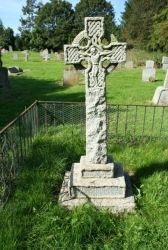 |
|
|
Corporal 538218 Alfred George Fletcher |
|
Formerly R/798 Middlesex Regiment Signal Sect. Training Centre (Bedford) Royal Engineers. Died of Malaria and Enteric Fever at Home 29th August 1918, Aged 32. Buried Loughborough Cemetery 2/95.
|
|
Alfred George Fletcher was born in Loughborough in 1885. He was the son of George Richard Fletcher, a carpenter and joiner, and his wife Annie Elizabeth (née Levers) who were married at the Baptist Chapel in Baxtergate, Loughborough, on 9th October 1883. Alfred had one brother Wilfred and one sister Ada. Another brother Richard died, aged nine, in 1896. In 1891 the Fletcher family lived at 5 Canal Bank, Bridge Street, Loughborough. They later moved to 27 Shakespeare Street and then to 49 William Street.
When Alfred left school he started work at the local Rates Office as rate collector's clerk. In 1910, after seven years in this position, he was appointed Assistant Rate Collector at the Municipal Offices in Kingston-on-Thames, Surrey, and took lodgings at 91 Richmond Road, Kingston-on-Thames, with the Roberts family. When war broke out Alfred enlisted at Twickenham, Middlesex, on 9th September 1914. He had previously served for three years in the Territorial Army. He joined the 8th Battalion of the Duke of Cambridge's Own (Middlesex Regiment) as Private R/798 but was only with them for a short time. On 4th December 1914 he was transferred to the Home Counties Division Signals Company, Royal Engineers, as Sapper 1326 (later renumbered as 538218) and sent to Brighton. Alfred was sent to France on 16th January 1915 with the 28th Division Signals Company of the Royal Engineers and on 6th March 1915 was officially confirmed as one of their ranks. The Royal Engineers carried out a number of different roles for the army both in the battlefield and along the lines of communication. The various specialisms were organised into different types of units. These units were attached to Divisions, or to larger formations at Corps, Army or even GHQ. The main ones were the Field Companies and the Signals Companies. As they were attached to the fighting portions of the Divisions, these Companies often saw action and took part in the fighting. The Signals Companies were responsible for all forms of signalling; visual, telegraph, telephone, signal despatch and later wireless communications from HQ down to Brigades, and for artillery communications down to Batteries. Throughout most of the Great War the primary means of communications were visual, telegraph and despatch by runner, horseback or motorcycle. The main types of visual signalling were flags, lamps and lights, and the heliograph. Although visual signalling was generally unsuitable for trench warfare because the operator had to show himself, it had an important communications role, particularly where the Army was moving too quickly to establish a telephone network. By the outbreak of WWI the Army had a small number of wireless sets. These were mainly spark transmitters which operated on long wave and were cumbersome, heavy and unreliable. In 1915 trench sets were involved on the western front but were not a great success, partly because the enemy could easily overhear the messages. In 1914 the Royal Flying Corps began to use Marconi transmitters to direct artillery fire. These fitted into an aircraft and sent Morse signals to be picked up on the ground. When Alfred officially joined the 28th Division Signals Company in March 1915 the company was repairing communication lines damaged by shell-fire south of the Ypres Canal. They next moved a wireless listening station to Ypres. During this time Alfred was promoted to Acting Lance Corporal. In April a wireless listening station was moved to Potijze, extra lines were laid to Poperinghe and Wieltze and two air lines constructed to Verlorenhoek. Between 22nd April and 10th May, during the 2nd Battle of Ypres, the company was constantly busy repairing lines to the brigades and messages were sent by despatch riders. For part of his time in France Alfred is known to have been a despatch rider. During the latter part of May the company was fully occupied in the area of Watou, Winizeele, Herzeele and Proven. From June to September the company was based firstly at Westoutre and then at Dranoutre for work between Locre, La Clytte and Kemmel. In late September the company marched to Béthune to open lines to Sailly, Noyelles and Annequin and in early October they completed work at Busnes and Le Quesnoy. On 19th October 1915 the 28th Division Signals Company was ordered to prepare to sail, with the Division, for the Mediterranean. On 21st October the Signals Company entrained for Marseille and on arrival marched to camp at Parc de Borely. After the Signals Company arrived in Alexandria, Egypt, it was ordered with the 28th Division to Salonika and completed its disembarkation there on 4th January 1916. Anglo-French forces had begun landing at the Greek port of Salonika in October 1915. The troops were sent to provide military assistance to the Serbs who had recently been attacked by combined German, Austro-Hungarian and Bulgarian armies. The intervention came too late to save Serbia and, after a brief winter campaign in severe weather conditions on the Serbian frontier, the Anglo-French forces found themselves back at Salonika. At this point the British advised that the troops be withdrawn. However, the French - with Russian, Italian and Serbian backing - still believed something of strategic importance could be gained in the Balkans. During the first four months of 1916 the British Salonika Force redoubled its efforts to prevent Bulgaria invading Greece. Large amounts of barbed wire were used and a bastion about eight miles north of the city was created connecting with the Vardar marshes to the west, and the lake defences of Langaza and Beshik to the east, and so to the Gulf of Orfano and the Aegean Sea. After preparing the port of Salonika for defence, the troops moved up country and dug-in. Further Allied contingents of Serbian, Italian and Russian troops arrived in the summer and offensive operations began. The Bulgarian attempt at invasion of Greece in July was repulsed near Lake Doiran. At the beginning of October 1916 the British, in co-operation with her allies on other parts of the front, began operations on the River Struma towards Serres. The 28th Division was in action during the occupation of Mazirko and the capture of Barakli Jum'a in October 1916. The campaign was successful with the capture of the Rupell Pass and advances to within a few miles of Serres. In November 1916 Monastir fell to Franco-Serb forces. A second offensive began during the spring of 1917, in which the Division took part in the First Battle of Doiran (24th-25th April and 8th-9th May). This made little impression, however, on the Bulgarian defences. On 3rd October 1917 Alfred was promoted to the position of 2nd Corporal. Alfred returned to the UK in August 1918, having been transferred to the Royal Engineers Signal Section Training Centre at Bedford on 20th August. He was simultaneously granted a period of 21 days leave in order to get married on 26th August. The day after he reached Loughborough, however, he suffered an attack of malaria and he died at his parents' home, aged 32, on 29th August from malaria and enteric fever. Alfred was buried in Loughborough Cemetery, Grave 2/95. His coffin was covered with the Union Jack, and by the side of the hearse walked four wounded soldiers. There were many floral tributes. Alfred is remembered on the war memorial at Baxtergate Baptist Church and on the Carillon. |
|
Rifleman 242930 Frank Charles Fletcher |
|
Formerly 186477 Royal Engineers Died of Wounds 20th June 1917, Aged 27. Buried Mendinghem Military , Poperinge, II. D. 57.
|
|
Frank Charles Fletcher was born in Loughborough in 1890, the son of Charles Fletcher and his wife Catherine (née Scarbrough, and known as 'Kate'). Frank's parents were married in Nottingham in 1879. Frank had one brother Willie and two sisters Lizzie and Ethel and the Fletcher family lived at 17 Church Gate in Loughborough. Frank's father was a boot salesman who progressed to being a boot shop manager.
Frank became a plumber and worked as an inspector for Loughborough Corporation Waterworks Department. Testimonials for Frank include such phrases as 'An excellent workman, very steady, sober and an excellent craftsman' and 'Smart, active and intelligent'. On 3rd September 1914 Frank married Alice Ellen Matilda Burman (known as 'Nellie') at St. Mary's Parish Church, Acton, Middlesex. Nellie's family had previously lived in Toothill Road, Loughborough, but had moved to London. Frank and Nellie set up home at 18 Curzon Street, Loughborough, and their daughter Kathleen was born in the summer of 1915. Not long afterwards, on 2nd December 1915 Frank enlisted and was put on the Army Reserve list. Mobilised on 29th August 1916 Frank was posted to the Royal Engineers depot on 30th August as Sapper 186477. On 5th October 1915 he was transferred to the Royal Engineers Training Centre (E.T.C.) in Deganwy (no. 5. Depot) and took up signalling. On 31st December 1916 he was transferred to the 2nd Battalion of the Prince of Wales's Volunteers (South Lancashire) Regiment as Rifleman 242930 and embarked at Southampton for the Brigade Depot in Rouen. On 2nd January 1917 he was admitted to No. 25 Stationary Hospital, Rouen, where he remained until 13th January. He was posted from the Depot in Rouen to the 1/5th Battalion of the South Lancashire Regiment on 24th January and joined the battalion in the field on 25th January. At the time the battalion was training at Merckeghem but on 3rd February entrained at Bollezeele for Poperinghe and marched to 'E' Camp on the Elverdinghe-Poperinghe road. Here training continued until 9th February when the battalion moved to Mouton Farm, Elverdinghe, and provided working parties. A trench tour followed from 21st until 26th February and then two more days training before the battalion entrained at Brandhoeck for Ypres. Here there were more trench tours, with breaks at billets on Ypres Canal Bank or at 'D' Camp, Brandhoeck until mid-April. In the first half of May the battalion was in trenches in the Wieltje sector where they were subjected to heavy shelling and bombardment. After a break at Camp 'L', Poperinghe the battalion went to the trenches at Railway Wood, Zillebeke, where there was considerable hostile activity on both sides, including the blowing of mines and discharging of gas bombs. In mid-June the battalion moved into Brigade Reserve at Ypres and were heavily shelled while in transit. On 19th June Frank was seriously wounded. He was taken to No. 46 Casualty Clearing Station at Mendinghem with a compound fracture of the right tibia and gunshot wounds to the buttocks, left hand and leg. The first message about what had happened to Frank came in a letter sent off on the Tuesday 19th June by the ambulance man who brought Rifleman Fletcher, severely wounded, to the casualty clearing station, and the writer appeared hopeful that the wounded man would pull through. On Monday 25th June, however, a telegram arrived bearing the news that he had died at the casualty clearing station on 20th June. He was aged 27. Frank was buried in Mendinghem Cemetery, Poperinghe, Grave II. D. 57. After Frank died his widow and daughter returned to live with her parents in Shakespeare Street, Acton. |
|
Private 43115 George Maltby Fletcher |
|
10th Bn. Cameronians (Scottish Rifles). Killed in Action 3rd August 1918, Aged 29. Commemorated Hollybrook Memorial, Southampton.
|
| When George was born the Fletcher family was living in Main Street, East Leake, but by 1901 they had moved to 26 Wellington Street, Loughborough. George had two sisters Elizabeth and Thirza; two brothers to George, Arthur and William, had died young.
George's father was twice brought before the Loughborough Petty Sessions court and fined for being drunk and disorderly in the streets, once in 1901 and once in 1909. In 1903 George's sister Thirza caught smallpox in an outbreak in Loughborough and was removed to the local isolation hospital (a small rented cottage deemed by the authorities as inadequate). Fortunately she survived and the rest of the family escaped infection. In 1911 George, aged 21, was an ostler for a public house and lodging with the Fletcher family at Wellington Street was a young hosiery seamer Flora Oram. George and Flora were married on 23rd December 1911 at Holy Trinity Church, Loughborough, and set up home at 20 Queen Street, Loughborough. George's service papers have not survived but he appears to have enlisted in early September 1914. He initially joined the King's Own Scottish Borderers as Private 18328 and about a year later was transferred to the Cameronians (Scottish Rifles) as Private 43115. George's medal record shows that he was not sent overseas until after the beginning of 1916. George is known to have served with the 1st Battalion and 10th (Service) Battalion of the Cameronians but his exact date of transfer from the King's Own Scottish Borderers to the Cameronians, and exact date of transfer between the 1st and 10th Battalions of the Cameronians are unknown. It is possible, however, that George transferred to the Cameronians in mid-1915 and was sent to France about a year later. If George joined the 1st Cameronians in France in mid-1916 and remained with them for a couple of years he would, providing he was not wounded, have taken part in a number of battles beginning with the Somme Offensive. The battalion fought on 12th July 1916 in the Battle of Albert, on 14th July in the Battle of Bazentin Ridge, in the Attacks on High Wood on 18th July and in the capture of Dewdrop and Baritska Trenches on 25th October. In 1917 the 1st Cameronians were in action in the First and Second Battles of the Scarpe (14th and 23rd April respectively), the Actions on the Hindenburg Line on 20th May, and the Operations on the Flanders Coast on 18th August. On 24th September they fought in the Battle of the Menin Road Ridge and four days later in the Battle of Polygon Wood. If George was still with the 1st Cameronians in 1918 he would have taken part in the Battles of the Lys: Messines (11th April), Hazebrouck (12th April), Bailleul (13th April), Defence of Neuve Eglise (14th April), the First Battle of Kemmel Ridge (17th April), and the recapture of Ridge Wood (8th May). If George was transferred to the 10th Cameronians soon after he was sent overseas he might have been involved in the German gas attacks at Hulluch (27th April 1916) and the action at the Kink Salient (11th May 1916). With the 10th Cameronians he would also have been involved, providing he was not wounded, in four battles of the Somme Offensive of 1916: Pozières Ridge (8th August), Flers-Courcelette (15th September) and Le Transloy Ridges (9th October). In 1917 the 10th Cameronians were, like the 1st Cameronians, involved in the First and Second Battles of the Scarpe (9th and 23rd April). They captured Guemappe, also on 23rd April. By 31st July the 10th Battalion was on the Ypres Salient and in action at the Battle of Pilckem Ridge. On 17th August 1917 they were at the Battle of Langemarck and on 22nd August were fighting for Zevenkote. In March 1918, when the Germans began their Spring Offensive the battalion was in action at the Battle of Bapaume (24th March) and the First Battle of Arras (28th March). George was wounded in action probably in the Battles of the Marne, either at Soissonais or Ourcq (23rd July) or in the attack on Buzancy (28th July). He was transferred to the hospital ship HMAT Warilda (His Majesty's Australian Transport) to be taken from Le Havre to Southampton. On the 3rd August 1918 the Warilda was crossing the English Channel when, despite being clearly marked with the Red Cross, she was torpedoed by the German submarine UC-49. As with a number of other hospital ships torpedoed during the war, Germany claimed the ships were also carrying arms. The ship had 801 persons on board and sank in about two hours, with the loss of 123 lives. Many of the wounded on board had eye injuries and as they could not see were rendered helpless. George, aged 29, was one of those lost. Amongst the survivors was her commander, Captain J. Sim, who was later awarded the OBE by King George V. The wreck of the Warilda lies in the English Channel. George is remembered on the Hollybrook Memorial, Southampton. George's father predeceased him by a few months in 1918. George's widow was remarried in Loughborough in the summer of 1919 to Thomas West. |
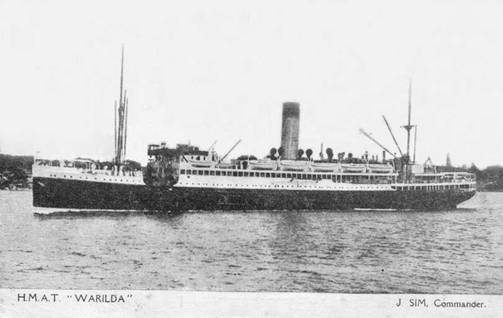 |
|
Hollybrook Memorial, Southampton
|
|
Private 203860 James Farmer Fletcher |
|
Killed in Action 27th May 1918, Aged 31. Buried Sissonne British Cemetery, Aisne, M. 1. |
|
James Farmer Fletcher was born in late 1885 or early 1886 in Wymeswold, Leicestershire. He was the son of William Fletcher and his wife Elizabeth (née Basford) who were married in the Loughborough area in early 1868. The Fletcher family lived in Brook Street, Wymeswold, and James's father was a sawyer. James had one brother Ernest and two sisters Alice and Elizabeth. Another bother, also called James, died in infancy.
In 1901, when he was fifteen, James was an agricultural labourer but by 1911 he was working as a labourer in a wood yard. In 1907 he had married Florence Selby and by 1914 James and Florence had two children William and Irene. James and Florence initially lived in Brook Street, Wymeswold, close to James's parents but by 1914 had moved to Swithland. Around this time James secured employment at the Brush Electrical Engineering Company in Loughborough. James's service papers have not survived but his service number indicates that he enlisted in Loughborough in the summer of 1915. He joined the Leicestershire Regiment as Private 203860 and was posted to the 7th (Service) Battalion. The date when he was sent to France is also unknown but it was after 1st January 1916. In January 1916 the 7th Leicesters were involved in various trench warfare activities in the area of Arras. The freezing weather made life doubly difficult and in February they were required to take over extra trench areas vacated by the French who were concentrating every effort at the Battle of Verdun. These new trenches eventually included those in front of Bailleulmont to the left of existing positions and to the right as far as far as Hannescamps. At the same time the enemy redoubled its efforts in shelling Berles-au-Bois. When not in the trenches the 7th Leicesters received intensive training in bombing, Lewis gunnery, visual signalling and a host of other activities. In April they were moved to the Doullens area and formed working parties to cut down trees and prepare brushwood for the front line as well as repairing the support trenches in the area. In May they worked on building a new railway line between Le Bret and Bienvillers-au-Bois. Men not building the railway were in the trenches. Towards the end of May the entire battalion returned to the trenches in the Bienvillers-Bailleulmont area. At the beginning of July 1916 the 7th Battalion moved on to the Somme. They were at Fricourt on 13th July and at Mametz Wood and in the attack on Bazentin-le-Petit on 14th July. Relieved from Mametz Wood on 16th July the battalion proceeded to Fricourt and then on to Ribbemont. On 20th July they began a three day move by train and route march to Moncheux, and two days later marched on to billets at Beaufort. On 28th July the battalion moved again to Agnez-les-Duisans, near Arras, for company training and on 6th August took over a section of battered trenches there. The companies of the battalion took turns in trench work. On 4th September the battalion marched to Denier. After ten days training at Denier and Sars-le-Bois the battalion entrained for the Somme on 12th September and bivouacked outside Montauban, north-east of Bernafay Wood. On 25th September they fought very bravely and successfully at Gueudecourt in an action which was part of the Battle of Morval. On 4th October the battalion entrained once more for the north and the countryside of Loos, taking over positions opposite the Hohenzollern Redoubt with rest billets at Mazingarbe, Philosophe, or Vermelles. Training at Cauchy-à-la-Tour and Houtkerque followed from 20th December 1916 until 12th February 1917. On 13th February the battalion entrained at Proven for Fouquerieul and marched to billets in the tobacco factory in Béthune. Moving on to Labourse they were back in the trenches in the Hohenzollern sector on 15th February, moving up to the front line on 21st February. Breaks from the trenches were taken in Noyelles. In March 1917 the battalion experienced what one soldier called 'the bombardment of our lives'. On 29th March the battalion entrained at Noyelles for Saulty-L'Arbret and marched to La Cauchie and on to Moyenville. On 4th April the battalion went into the front line at St. Leger Croisilles, with breaks at Moyenville. From 15th to 23rd April the battalion was in training at Bailleulval before returning to the trenches at St. Leger Croisilles. On 28th April the battalion was in action at the Battle of Arleux and on 3rd May in reserve for the 2nd Battle of Bullecourt, moving into the front line on 4th May. From 4th -11th May the battalion suffered from very heavy enemy shelling. From 12th-31st May the battalion was withdrawn for training at Bienvillers. Further training and trench tours followed in the Moyenville area in June, July and August, followed by a break in Hamelincourt. On 25th and 26th August the battalion marched to Gouy-en-Artois and then Beaufort for training. After a further move to Hauteville for more training and a football tournament and boxing competition, both of which the 7th Leicesters won, on 16th September the battalion entrained at Savy station for Caestre. On 23rd September the battalion marched to Berthen. On 26th September they moved by bus to Scottish Wood and then to Bedford House as reserve in the forward area. After two days rest at Micmac Camp the battalion was back in the forward area on 29th. The 3rd Battle of Ypres had been raging for two months and the ground was full of water-logged shell holes, which had to be negotiated over duckboards. The 7th Leicesters joined the battle on the night of the 30th September, marching up to Polygon Wood, which had been captured by the Australians. The 9th Leicesters took over positions in the right half of the Polygon sector just outside the wood with the 7th Battalion behind them in support and the 6th Leicesters in reserve. On 1st October the enemy began a heavy barrage. The Leicesters nevertheless pushed forward. An intense artillery duel followed on 2nd October before the battalion was relieved and marched south-east of Zillebeke Lake to Wiltshire Farm. On 4th October the battalion moved up again to south of Zillebeke Lake, bivouacking there. On the following day they were back in the support line west of Polygon Wood. On 6th October two companies moved up to the front line at Reutel, with the other two companies in support. On 10th October, amid a hostile barrage, the battalion was relieved and moved to Anzac Camp. On the 11th October they entrained at Ouderdom station for Ebblinghem and marched to billets and camp at La Carnois. After four days rest they marched to Les Ciseaux and were taken by bus to dugouts in the railway embankments at Shrapnel Corner. After remaining here until 24th October they moved to B Camp at Chateau Segard for reorganisation and training. After three days cable laying at Clapham Junction at the beginning of November the battalion returned to B Camp before moving to dugouts on the Zillebeke Bund on 7th November and to the front line on the following day. After returning to A Camp at Chateau Segard on 13th November the battalion moved on to Devonshire Camp in the Reninghelst area and on 17th began a five day transfer by march to Coupigny. On 25th November they moved again to Frevillers for training. On 30th November the battalion received urgent orders to entrain at Savy for Tincourt. On 1st December 1917 the battalion went into the front and support lines near Tincourt, moving into the support trenches at Epehy on 4th. Back in the front line from the 8th-11th December the battalion installed wiring, improved trenches and dug a new front line. After a break at Villers-Faucon they returned to the front line from 16th-20th. On Christmas Eve the battalion returned to the trenches for four days, but were given their Christmas dinner at Saulcourt on 29th December. The new year of 1918 began with a four day trench tour, followed by training at Liéramont and Haut Allaines until 19th January. On the 20th the battalion moved to Epehy by light railway and began another trench tour before moving into Brigade Reserve at Saulcourt on 28th. On 4th February the battalion moved into support at Epehy. Relieved on 7th February the battalion moved by light railway to Moislains, where training took place until 18th February. The battalion then moved to B Camp, Templeux la Fosse, and worked on the trenches and railway at Flamincourt. From 24th -28th February the battalion was based at Adrian Camp, Villers-Faucon, for wiring work and trench digging. In March it became clear that the Germans were planning a Spring Offensive. On the morning of the enemy assault, 21st March 1918, the 7th Battalion was holding the left hand portion of the front between Pezières and Epehy village when it was attacked by German stormtroopers. The battle for Epehy raged all day. On 22nd March the battalion was ordered to retreat towards the old Somme battlefield of 1916, crossing the Peronne Canal to Aizecourt-le-Bas and Feuillaucourt and taking up position on a ridge to the north of Hem. On 2nd April the battalion marched to Dranoutre and entrained at St. Roch station, Amiens, having been posted once more to the Ypres Salient. They proceeded by lorry to Monmouthshire Camp, moving on to Butterfly and Leeds Camps, La Clytte, Chipawa and Scottish Wood Camps and arriving at Manawatu Camp on 11th. On 12th April the battalion went into the trenches, holding the front, reserve and support lines until 17th April during the second major German offensive which had opened on the Lys. In spite of a heavy German attack the battalion held out until relieved on 1st May. Having been withdrawn to Oost Houck they marched to Wizernes on 4th May and entrained for Labery where training took place until 12th May. On 14th May the battalion marched via Prouilly to the trenches west of Hermonville in the valley of the River Aisne. On 27th May the battalion entered the 3rd Battle of the Aisne, begun by the Germans as part of their Spring Offensive. James, aged 31, was killed in action on 27th May 1918. James was buried at Sissonne British Cemetery, Aisne, Grave M. 1. He is remembered on the memorials of St. Mary the Virgin Church, Wymeswold, and Wymeswold Memorial Hall, in both cases his name being incorrectly inscribed as 'James Furmer Fletcher'. He is also commemorated on the Brush Memorial (in the Carillon War Memorial Museum). James's widow was remarried in 1923 at the Church of St. Mary the Virgin, Wymeswold, to John Edward Clarke. |
|
Private 4732 Harry Bradley Folkes |
|
|
1/5th Bn.Northumberland Fusiliers. Killed in Action 1st October 1916, Aged 32. Commemorated Thiepval Memorial pier and face 10b 11b & 12b. |
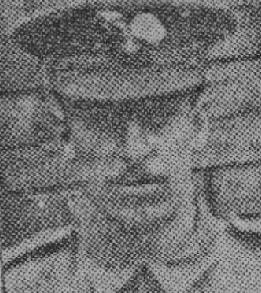 |
|
Harry Bradley Folkes was born in Loughborough in 1883 and his birth registered incorrectly under the surname Faulkes. He was the son of Benjamin George Folkes and his wife Fanny (née Bradley) who were married in Loughborough in 1873. His father was initially a spinner of merino wool but by 1901 had become a timber and firewood dealer. In 1881 the family lived in Duke Street, Loughborough, but they later moved to No. 66 Nottingham Road and then to No. 40 in the same road. Harry had four brothers George, William, Charles and James and five sisters Florence, Ethel, Minnie, Theresa and Rose. Another brother John had died young. In 1911 Harry had joined his father in the timber and firewood business in sales and delivery.
Harry's Army Service record has not survived and his date of enlistment is unknown but he joined the 1/5th (Territorial) Battalion of the Northumberland Fusiliers as Private 4732. It seems unlikely that he went to France and Flanders before 1916 as he was not awarded the 1914/15 Star medal. From January to the end of March 1916 the 1/5th Battalion of the Northumberland Fusiliers was in the trenches in the area of Ypres and being subjected to a considerable amount of artillery fire from the enemy. Occasional breaks were taken in Poperinghe. On 1st April the battalion marched to Locre, a small village in West Flanders, to hold the front there. There was a break in Bailleul, French Flanders, in May, after which the battalion returned to Locre where they remained until late July. On 22nd July the news was received that the battalion would be moving towards Neuve Eglise, Alsace, and they marched to camp at Dranoutre, south of Ypres. The battalion stayed at Dranoutre until 7th August when they marched via Meteren to Strazeele. On 11th August they entrained at Bailleul for Doullens, Somme, and then marched to billets in Candas and Fienvillers. From there they marched to Naours and Pierregot and arrived at Hénencourt on 17th August. A period of training commenced at Hénencourt Wood and continued until 7th September. On 8th September they marched through Albert and went into dugouts at Lozenge Wood. On 10th September the battalion was ordered to take over some more of the front line trenches around Martinpuich which the enemy was attacking with a heavy barrage. On 15th September the Battle of Flers-Courcelette began and Frederick's battalion was in action between High Wood and Martinpuich, having been sent to reinforce an attack by the 1/4th and 1/7th Northumberland Fusiliers. The Battle continued until 22nd September but the 1/5th Northumberland Fusiliers were pulled from the front line on 16th and took up a position in dugouts a little further back. The battalion remained in nearby trenches until the end of the battle. On 25th September the battalion moved even further back from the front to Contalmaison. After two days of providing working parties on the roads the battalion returned to the trenches near Martinpuich on 29th September and were once again under heavy bombardment by the enemy. On 1st October 1916 the battalion was ordered to attack and capture Eaucort l'Abbaye north-west of Martinpuich and during this attack Harry, aged 32, was killed in action. His body was never found and he is remembered on the Thiepval Memorial Pier and Face 10B, 11B and 12B. Writing to Harry's parents, the chaplain of the regiment said: 'You will have heard the sad news of the death of your son, Pte. H. Folkes who was killed during the recent advance. I understand that your son's death was instantaneous and that he suffered no pain. A cross will be erected on the field in memory of those who have fallen and upon it will be inscribed their names. Your son's comrades desire me to convey to you their sincere sympathy in your sorrow. They feel that they are the poorer for the passing of a good friend and a true solider. It will, I trust, be some consolation to you in your time of trial to realise that your son has given his life for the sake of others'. Harry's brother Charles also served with the Northumberland Fusiliers and survived the war. |
|
|
Private 32820 James Freestone |
|
8th Bn, Leicestershire Regiment. Died of wounds 14th October 1917, Aged 27. Buried Godewaersvelde British Cemetery, I. O. 7.
|
|
James Freestone was born at Stapenhill, Burton on Trent, Staffordshire, in 1890, the youngest child of James Freestone and his wife Eliza (née Thurman) who were married at St. Botolph's Church, Shepshed, on 30th March 1874. James Junior had two older brothers Herbert and Ernest and four older sisters Charlotte, Eliza, Sarah and Edith. In 1891 the family was living at 16 Short Street, Stapenhill, and James Junior's father was employed as a maltster. By 1901 the family had moved to a cottage in Loughborough Road, Quorn, James Senior is no longer with them but heading the household is William Freestone, a cowman on a farm. By 1911 the family had moved again to Iveshead Road, Shepshed, William Freestone, now a stone quarryman, was still with them, and James Junior was employed as a clay miner. In late 1911 James Junior married Kate Allen in the Loughborough registration area and the young couple set up home in Ring Fence, Shepshed. James Junior was now employed as a builder's labourer with William Blood of Shepshed and by 1916 they had three daughters Gladys, Lily and Edith. The family later moved to 46 Mill Street, Loughborough. On 12th March 1914 James Junior enlisted at Shepshed to join the Leicestershire Territorial Army. Posted to the 1/5th Battalion he served with them until 26th December 1914 when he was discharged. He reenlisted with the Leicestershire Regiment in 1916 as Private 32820 and was posted to the 8th Battalion. As his service record has not survived it is not known when he joined the battalion but in December 1916 and January 1917 reinforcement drafts of ordinary rank soldiers joined their number and it is possible that James was in one of these groups. On 11th October 1916 the 8th Leicesters had moved into the Hohenzollern reserve, support and frontline trenches. The battalion remained in the Hohenzollern sector, with breaks at Mazingarbe and Vermelles until 15th December when they marched to billets in the candle factory at Béthune. From there the battalion moved to Auchel where they remained until 26th January 1917 training. On 28th December the troops were entertained by a Lena Ashwell concert party. From Auchel the men moved to Winnezeele to continue training in tactical manoeuvres before returning to Béthune and the front line trenches at Sailly Labourse, with breaks at Noyelles-sur-Mer and Mazingarbe. In April 1917 the battalion moved to Hamelincourt and occupied the Outpost Line on the Hénin-Croisilles road until 13th April, then transferred to Bailleulmont for training before going into support at St. Leger. On 3rd May the battalion took part in an attack on the village of Fontaine-lès-Croisilles where casualties were high. After the attack the battalion bivouacked at St. Leger before going back into the line on 9th May. On 11th May the battalion marched to Berles-au-Bois for musketry training and practice in tactical schemes, brigade sports and inspections which lasted until the end of May. On 1st June the battalion marched to huts in Hamelincourt for additional training in bombing and rifle grenades and field exercises until 7th June. On the night of 7th/8th the battalion went into the trenches in the Hindenburg Line. From there they attacked the enemy on 15th June but were compelled to withdraw. They remained in the front line until 19th June when they returned to camp at Hamelincourt. A period of rest at Blairville then lasted until 1st July, after which the battalion returned to Hamelincourt. On 9th July 1917 the battalion was back in the trenches near Croisilles before going into Brigade Reserve. After one more front line trench tour at Croisilles the battalion moved to Camp A at Moyenville for eight days training. Another trench tour followed before the battalion moved to a hutment camp at Ervillers on 17th August. On 25th August the battalion moved by motor bus to Barly and from there, on the following day, marched to Ambrines. Two periods of training followed, firstly at Ambrines and then at Avesnes-le-Comte. On 16th September the battalion marched to Savy, entrained for Caestre and went into camp for more training. On 23rd September they began a series of moves, firstly to Meteren, then by bus to Hallebast before marching to Sint Hubertushoek and from there to Ridge Wood south-west of Ypres. On 30th September they moved up to the front line at Polygon Wood. On 1st October the enemy attacked the 9th Leicesters who were nearby and got possession of their front line. The 8th Leicesters went to assist but the enemy made repeated attacks. Counter-attacks were hit by a heavy enemy barrage in the neighbourhood of Joist Farm. On the night of the 2nd/3rd October the battalion was relieved and marched to Scottish Wood Camp. On 4th October the 8th and 9th Battalions of the Leicesters were amalgamated because of their high casualty rate. On 5th October the battalion moved to railway dugouts at Zillebeke. James was wounded in action on 7th October 1917, and he died of his wounds on 14th October, aged 27. He was buried in Godeswaersvelde British Cemetery, France, Grave I. 0. 7. James is remembered on the Shepshed War Memorial in Glenmore Park and on the war memorial in the Church of St. James the Greater, Oaks in Charnwood. |
|
Private 241318 Alfred Leonard French |
|
|
2/4th Bn, Leicestershire Regiment. Killed in Action 25th March 1918, Aged 33. Commemorated Arras Memorial bay 5
|
|
|
Alfred Leonard French (known to his family as 'Leonard') was born in Sutton Bonington, Nottinghamshire, in 1884 and baptised on 34th August 1884 at St. Michael's Church, Sutton Bonington. He was the only son of Alfred French and his wife Elizabeth Ann (known as 'Lizzie', née Dexter) who were married on 25th June 1883 at St. Michael's Church. Sutton Bonington. Leonard would never have known his father who died a few months before he was born.
Leonard's mother Lizzie was remarried on 7th June 1890 at St. Michael's Church to Thomas Vickerstaff, a shepherd, and had three more children John, Millicent and Thomas, half-siblings to Leonard. The Vickerstaff family lived in Main Street, Sutton Bonington, near Leonard's grandfather Thomas Dexter, the local blacksmith, and his grandmother Lucy. In 1910 Leonard married Edith Shaw, a Griswold hosiery hand, and in 1911 the young couple were living in Sutton Bonington. Leonard was a terracotta presser at a brick manufacturing works. He was also a bell ringer and a parish clerk. In 1911 their only son William was born. Between 1911 and 1914 they moved to Bedford Street, Loughborough. Leonard enlisted in Loughborough and joined the 2/4th Battalion of the Leicestershire Regiment as Private 3653 (later renumbered as Private 241318). The 2/4th Battalion was formed at Leicester in September 1914 as a second line unit. It became part of 2nd Lincoln and Leicester Brigade, 2nd North Midland Division. In January 1915 it moved to Luton and by July 1915 was at St Albans and in August 1915 became the 177th Brigade, 59th (2nd North Midland) Division. In April 1916 it moved to Ireland to help deal with the Easter Uprising, returning to Fovant, Hampshire, in January 1917. As Leonard's service record has not survived, however, his date of enlistment and whether he was sent to Ireland are unknown. On 24th February the battalion left Fovant Camp for Southampton and crossed the Channel to Le Havre. After a day's rest the battalion proceeded to Pont du Metz and from there to Fouencamps, Somme. On 1st March they moved to No. 59 Camp, Bayonvillers for four days rest before transferring via Foucacourt to the reserve trenches at Belloy and up to the front line on 11th March. By 17th March the enemy had retreated and the battalion occupied former German trenches. Between 21st and 20th March the battalion moved via Foucacourt, Eterpigny, Mesnil and Cartigny to Hamelet to support the 5th Leicesters in an attack on Hesbecourt and Hervilly. On 2nd April the battalion attempted to attack Fervaque Farm but found it too heavily wired. Moving on to Roisel they took over the line from Margicourt to Fervaque Farm and down to Grand Priel Woods, gradually pushing the line forward. Relieved on 19th April the battalion went to billets in Bernes until 28th April when they went to the support line from Le Verguier to north of Pieumel Woods. In May the battalion completed three trench tours, two in the front line near Ascension Farm and one in support north of Le Verguier, with nine days rest at Bias Wood camp. A further five days rest at Dessart Wood camp were followed by a front line trench tour at Villers-Plouich and four days in support at Gouzeaucourt Wood in June, after which the battalion rested in tents at Equancourt until 1st July. July began with the battalion in the front and support lines at Equancourt and then in support at Metz. On 10th July the battalion was relieved and marched to Barastre, south-east of Arras, for Divisional training and sports until 22nd August. On 22nd August the battalion moved by route march and bus to Senlis where training continued until 31st August. After Senlis there were three more weeks training at Winnezeele before the battalion transferred to the Poperinghe area on 20th September. On 24th September the battalion moved into the Ypres North sector of the front to support the Staffordshire Regiment. On 25th September two companies of the 2/4th Battalion were in the front line, one company was in support and one was providing carrying parties. On 26th September an attack was launched on the enemy in the Battle of Polygon Wood (a phase of the 3rd Battle of Ypres, or Passchendaele). The enemy responded with a barrage of fire and all-day shelling. On the 27th September the battalion relieved the 4th and 5th Lincolns in the front line and extended the frontage by 300 yards. Although the Germans counter-attacked they were held off, but persisted with another two-day heavy barrage. When the battalion was relieved on 30th September casualties numbered 175. On 1st October the battalion began a twelve day move from Vlamertinghe to Thiennes by train, by bus and march to Beaumetz, then route march via Dieval, Houdain and Gouy Servins to Souchez. Reorganisation and some training took place on rest days during the move. Trench tours in the Avion sector followed, with battalion headquarters at Lens Canal. Training took place at Gouy Servins until 28th October when the battalion moved to Lievin by the Decauville railway. November included a front line trench tour, when the battalion was trench mortared by the enemy, and training at Chateau de la Haie and Bailleulval. On 23rd November the battalion entrained at Achiet-le-Grand for Fins and camped in Dessart Wood before marching to Flesquières and La Justice. On 30th November there was an SOS from the front regarding a heavy enemy bombardment and attack and on 1st December the battalion took over the front and support lines at Bourlon Wood. For two days the enemy artillery pounded the lines with heavy gas and high explosives. On 4th December the battalion withdrew to the old Hindenburg support line for rest, training, and to provide working parties. From 10th-14th December the battalion was at Trescault for more working parties before marching to Léchelle camp and then to Bertincourt. After a trench tour on the Hindenburg front the battalion moved on Christmas Day to Lignereuil by route march and train. The battalion remained at Lignereuil for rest and training until 8th February 1918. On 9th February 1918 the battalion began a three-day move via Bavincourt, Blairville and Armagh Camp, Bullecourt, to the front where they experienced heavy shelling and a sustained enemy barrage. Relieved on 18th and in the process of moving to l'Abbaye Camp, Mory, D Company was caught in shellfire. At Mory the men participated in inspections, training and some football before going back to the front near Bullecourt on 24th February. Here the Germans attempted a bombing raid but a patrol subsequently found that they had abandoned their trench. In early March the Germans were fairly quiet but by 14th it had become clear that they were planning an attack and on 17th March 800 drums of gas were fired into the enemy lines. The battalion was in Divisional Reserve at Mory when, on 21st March, they were ordered to the assembly lines and then to the support lines. Before they reached the support lines, however, they came under heavy enemy machine gun fire, and the Germans continued their advance. Orders came through to defend Mory as far as possible but on 22nd March the Germans continually reformed and attacked on several sides, bringing up a light trench mortar and high velocity gun. On 23rd the Gloucesters withdrew to high ground east of Ervillers and dug in but were bombed by enemy aeroplanes. On the evening of the 24th enemy bombing and shelling restarted and continued on 25th. 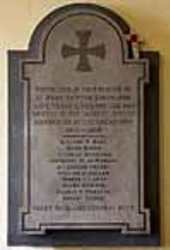 St Anne's Church, Sutton Bonington War Memorial 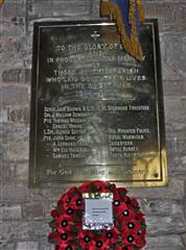 St Michael's Church, Sutton Bonington War Memorial Leonard was killed in action on 25th March 1918, aged 33. He was one of 432 casualties in the battalion. He is remembered on the Arras Memorial, Bay 5. He is also commemorated on the memorials in St. Michael's Church, Sutton Bonington, and St. Anne's Church, Sutton Bonington. |
|
|
Albert's Memorial Plaque.
|
|
|
Private 240140 Charles Friday |
|
|
1/5th Bn, Leicestershire Regiment. Died 16th February 1919, Aged 45. Buried Loughborough Cemetery 12 - 299.
|
|
|
Charles Friday, known as 'Charlie' to his friends and family, was born in Leamington Spa, Warwickshire, on 15th April 1873. He was the natural child of Jane Friday, a 40 year old unmarried dressmaker. The identity of his father is unknown. When Charlie was four his mother married William Berry, the widowed landlord of the New Inn Public House, Claydon, Oxfordshire.
In 1881 William and Jane Berry were living at the New Inn with young Charlie and two of Charlie's step-siblings William Junior and Elizabeth Berry. Charlie also had three other step-brothers George, Thomas and Samuel Berry and one step-sister Ellen Berry. Charlie's step-father William Berry died in 1887 and on 27th November 1888 Charlie's mother was married again to another widower Charles Bradley, a brickyard labourer. Charlie Friday now had two more step-brothers John and James Bradley and three more step-sisters Jane, Mary Ann and Sarah Ann. Charlie joined the Oxfordshire Light Infantry as Private 3610 on 23rd March 1891. He was initially trained at Cowley Barracks,Oxford. On 1st July 1891 he was posted to the 1st Battalion in Parkhurst, Isle of Wight, and he remained there with this battalion until 3rd February 1893, the year that his mother Jane died. He was then posted to the 2nd Battalion in India. For three years he was based in Bareilly, Uttar Pradesh, before moving to Ferozopore in the Punjab. In 1897 and 1898 the battalion formed part of Mohmand Field Force and the Peshawar column in the Tirah Expedition in the volatile North-West Frontier where the battalion saw action in the Khyber Pass, around Koda Khel and Ali Masjid. Charlie was awarded the India Medal 1895 with clasps for the Punjab Frontier and Tirah. Charlie returned to England on 20th December 1898. On 15th April 1899 he married Sarah Jane Ellen Betts at Holy Trinity Church, Barrow on Soar. Charlie and Sarah's first son, Charles Ernest, was born on 30th December 1899 but it was three years before Charlie saw him. In 1901 Charlie's wife and son were living in Sileby Road, Barrow on Soar. On 21st December 1899 Charlie had been appointed a Lance Corporal, transferred to the 1st Battalion and sent to South Africa where the 2nd Boer War had broken out. Charlie saw extensive service there until 3rd June 1902 and was awarded the Queen's South Africa Medal with clasps for Paardeborg, Dreifontein, the Relief of Kimberley and Transvaal. He was also awarded the King's Medal with clasps for 1901 and 1902. He returned home and was stationed at Chatham, Kent, until 27th March 1903 when he was discharged. Charlie found employment as a concrete worker in paving slabs and in 1911 the Friday family was living in Barrow on Soar. Charlie and Sarah now had four children Charles Ernest, Sidney, Florence and Hubert but had lost two girls Nellie and Winifred who had died young. Three more children Albert, Edith and Edward were born between 1912 and 1916. Hubert and Edith, however, also died young. The family later moved to 81 Wellington Street, Loughborough. On 11th February 1913 Charlie reenlisted with the 1/5th Battalion of the Leicestershire Regiment as Private 1481, later renumbered as 240140. The 1/5th Battalion was based at Bishops Stortford in November 1914 but was soon moved to Luton to practise marching and night work. On 25th February 1915 they were ordered to entrain at Harlow for Southampton. They landed at Le Havre three days later. They went by train to St. Omer, and then marched to Hardifort. The battalion spent the first few months in France in the Armentières sector, training and doing tours in the trenches. In April 1915 they moved to the trenches north-west of Wulverghem, with breaks at Dranoutre and Locre. During June the battalion completed trench tours in Kemmel and Zillebeke on the Ypres Salient. On 11th July 1915, while the battalion was training at Ouderdom, Charlie was admitted to No. 8 Field Ambulance with a hernia. On 22nd July he was transferred to England from Boulogne on the hospital ship HS Anglia. Charlie never returned to the front. He was transferred to light military duties and he began to suffer from heart problems. On 28th March 1917 he was discharged from the Army at Leicester, given a pension and a Silver War Badge. Charlie became the steward at the Loughborough Branch of the National Federation of Discharged and Demobilised Sailors and Soldiers (NFDDSS), founded in January 1917. He died at home, aged 45, on 16th February 1919. Charlie was buried in Loughorough Cemetery Grave 12 - 299. His obituary in the Loughborough Echo reported that: '[He] was a great favourite amongst ex -service men, a very large number of whom attended the funeral, which took place at Loughborough Cemetery. The Rev. J. Itsley (Curate of All Saints Church) conducted the ceremony, and among the family mourners were the deceased's widow and soldier son. The coffin, covered with the Union Jack, was borne to the grave by a number of comrades in the Leicestershire Regiment. There was a firing party from the barracks at Wigston, and after the three volleys had been fired, the last post was sounded. 'The Federation of Discharged and Demobilized Sailors and Soldiers have suffered a heavy loss by the passing of their late comrade, Charlie Friday. In his capacity as steward of the club, Charlie was universally popular, and there are very few men in Loughborough who commanded a larger circle of friends, or who compelled such universal respect. In Barrow-on-Soar there are many who will remember the days when Charlie was among them, and they too will mourn his passing. If ever any discharged man may be said to have given his life for his country, then it may safely be said of Charlie. His chief delight was tutoring the youngsters in making shots on the billiard table, and great was his delight if any of them showed signs of coming on. There are many who never knew the full charm of his attractive personality, but there are few who will not miss his cheery Good Morning Friend as they came through the club -room door. A keen believer in the outdoor work of the Federation, he was invariably to be found somewhere round the ring, and though much water may flow down the rivers before we meet him again, somewhere in the land that lies beyond we shall expect to see Charlie when we too make the journey.' Charlie's half-brother William Berry, who served in the war with the 5th Oxfordshire and Buckinghamshire Light Infantry, was killed in action in 1915. |
|
|
Charles Friday Has no memorial on his grave. |
|
|
Electrical Artificer 1st Class 344842 Arthur Froggatt |
|
|
Royal Navy HMS Invincible. Killed in Action Jutland 31st May 1916, Aged 36. Commemorated Portsmouth Naval Memorial panel 20.
|
|
|
Arthur Froggatt was born on 2nd May 1880 in Hunslet, Yorkshire, the son of James William Froggatt and his wife Jane (née Parker). He was baptised on 22nd August 1880 at St. Cuthbert's Church, Hunslet Moor. Arthur's father was an engineering fitter and had married Jane Parker, a sailor's daughter, on 12th August 1872 at St. Peter's Church, Leeds. Arthur had two brothers Joseph and Cyril and a sister Alice. In 1881 the family lived at 3 Williamson Buildings, Hunslet, but by 1891 had moved to 7 Falcon Street, Loughborough, as Arthur's father had taken a position at the Brush works. In 1901 they were living at 51 Ashby Road and Arthur was now also employed at the Brush works as a turner electrician.
On 14th January 1902 Arthur joined the Royal Navy as an Assistant Electrician, 4th Class No. 344842. Between 1902 and 1914 he served on HMS Vernon (the floating shore training establishment for the Navy's Torpedo Branch), HMS Duke of Wellington (shore station), HMS Good Hope (a Drake-class armoured cruiser), HMS Victory II (shore station), HMS Grafton (a first class cruiser of the Edgar class) and HMS Hercules (a Colossus-class battleship), progressing to the positions of Electrician 3rd and 2nd Class. On 12th January 1914 he was promoted to Electrical Artificer 1st Class on HMS Vernon. In 1907 at Portsea, Hampshire, Arthur had married Ellen Gertrude Wood, the daughter of a Royal Navy torpedo gunner. Arthur and Ellen mainly lived in Portsmouth but in 1911 they were temporarily based by the River Tyne at 13 Elm Street, Jarrow. By 1915 they had three children John, Doris and Cyril and Arthur's family was living at 58 Funtington Road, Connor, Portsmouth. In 1914 Arthur was transferred to HMS Invincible, a battlecruiser. On 28th August 1914 Invincible participated in the Battle of Heligoland Bight in a minor role as she was the oldest and slowest of the British battlecruisers present. She fired on the light cruiser Cöln, but did not hit her before Cöln was sunk by the battlecruiser Lion. During the Battle of the Falkland Islands on 8th December 1914, Invincible and her sister ship Inflexible sank the enemy's armoured cruisers Scharnhorst and Gneisenau almost without loss to themselves, despite numerous hits by the German ships. HMS Invincible was the flagship of the 3rd Battlecruiser Squadron during the Battle of Jutland (31st May-1st June 1916). Commanded by Captain A. L. Kay and flying the flag of Rear-Admiral Hon. Horace L. Hood HMS Invincible acted as a heavy scouting force during the battle. She was however, completely destroyed when in action with the enemy at 6.34pm on 31st May 1916. Two German ships Lützow and Derfflinger fired three salvoes each at Invincible and sank her in 90 seconds. At least one 305 mm (12-inch) shell from the third salvo struck her midships 'Q' turret. The shell penetrated the front of 'Q' turret, blew off the roof and detonated the midships magazines, which blew the ship in half. Of her complement, 1026 officers and men were killed, including Rear-Admiral Hood. There were only six survivors. Arthur's body was not recovered for burial. He was aged 36 when he lost his life and is commemorated on Portsmouth Naval Memorial Panel 20. |
|
|
At the Battle of Jutland on the 31st May 1916 HMS Invincible sank with the loss of 1,026 of her crew; only 5 men survived.
|
|
|
Portsmouth Naval Memorial
|
|

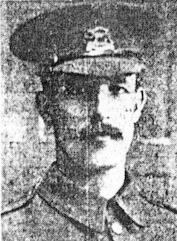

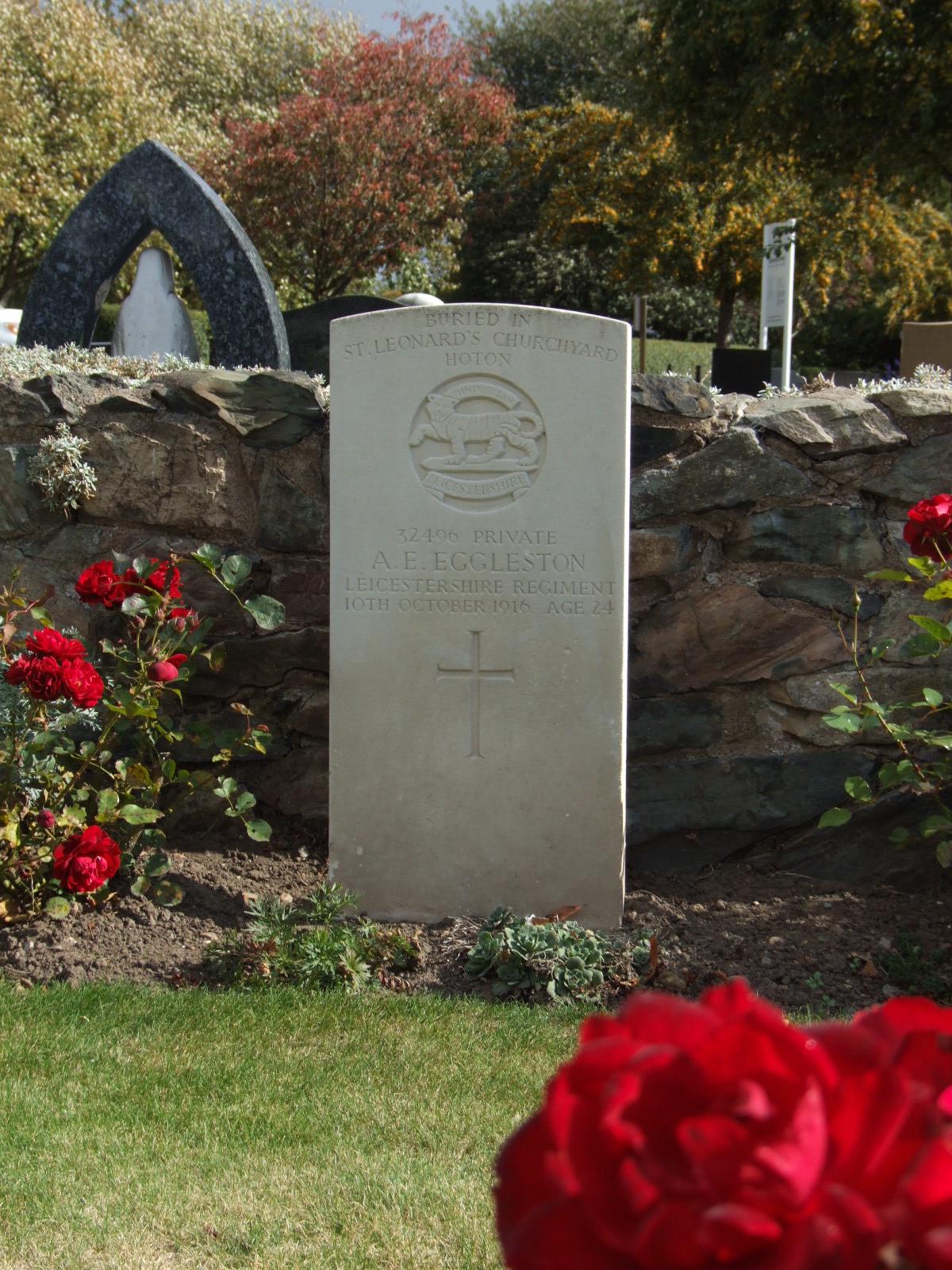
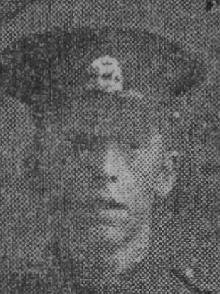
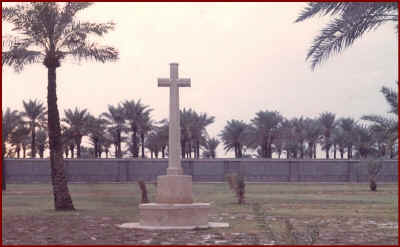
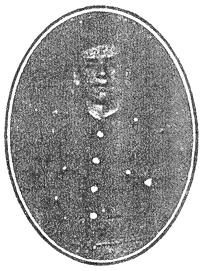
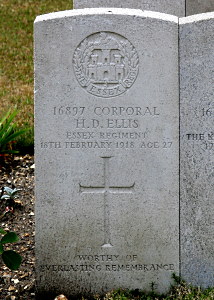
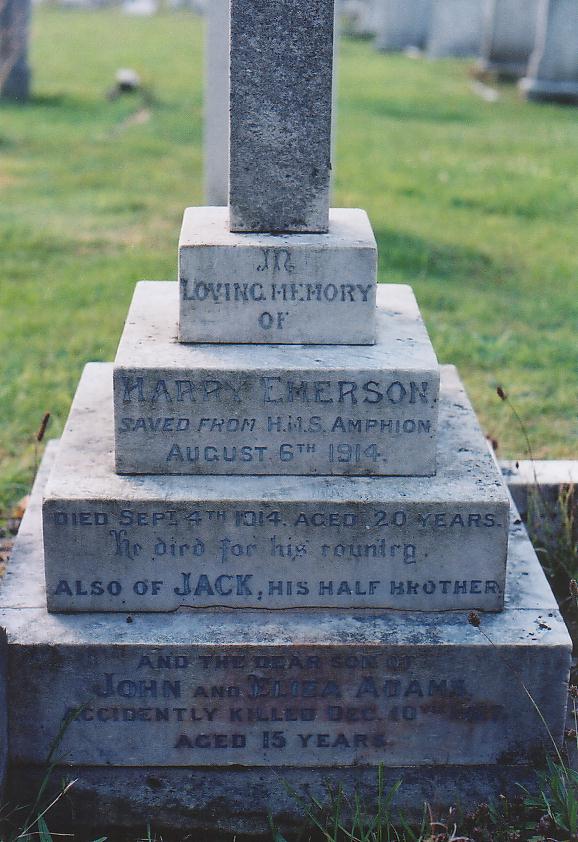
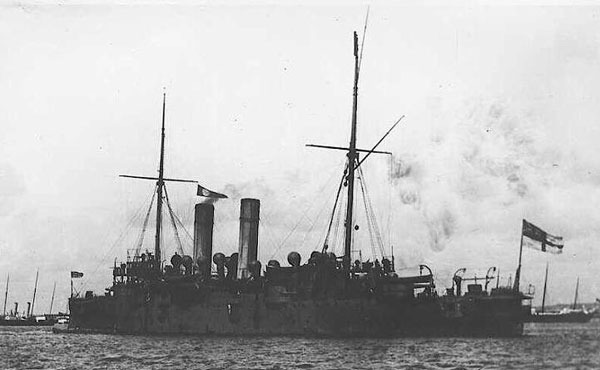
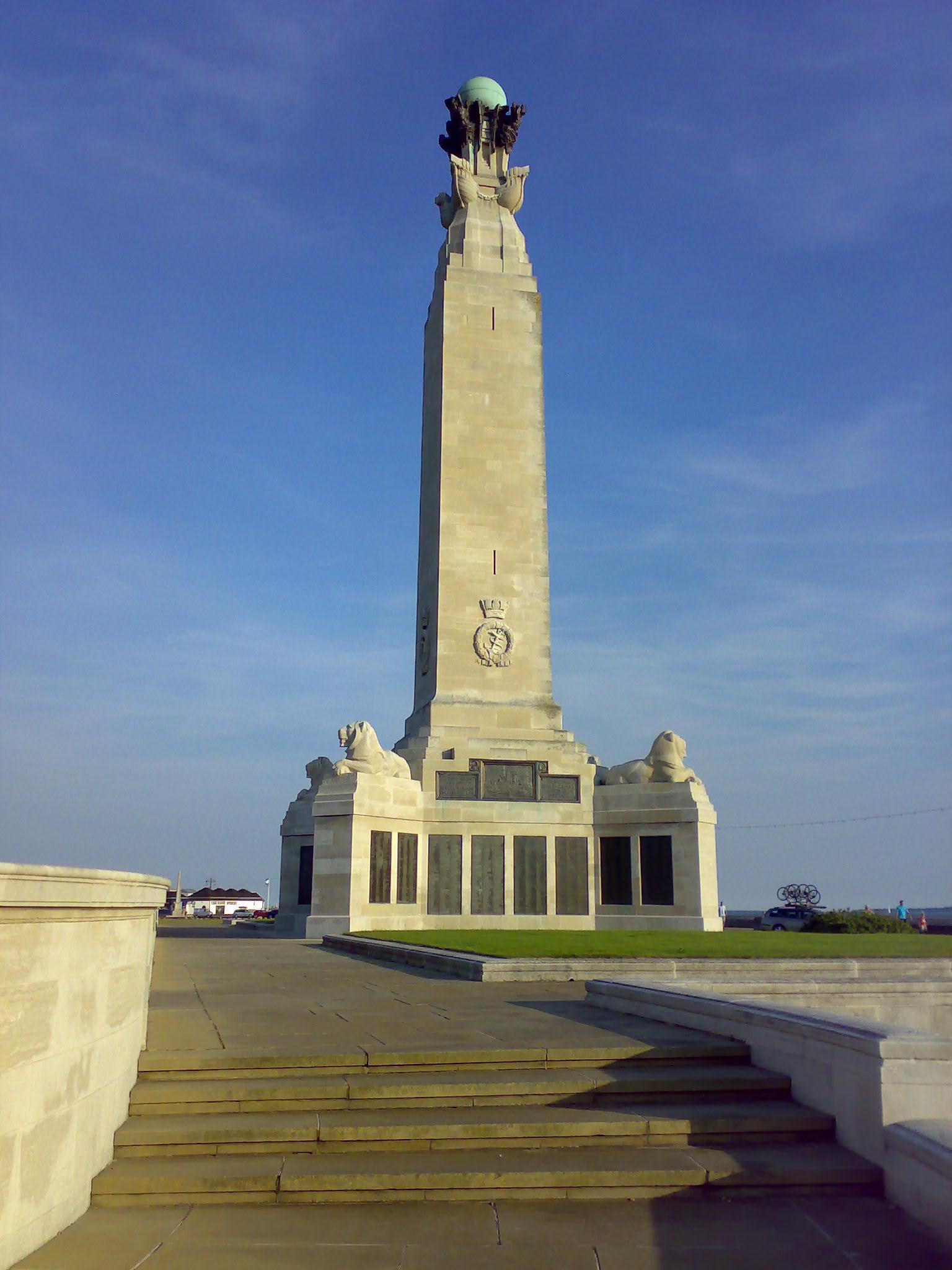
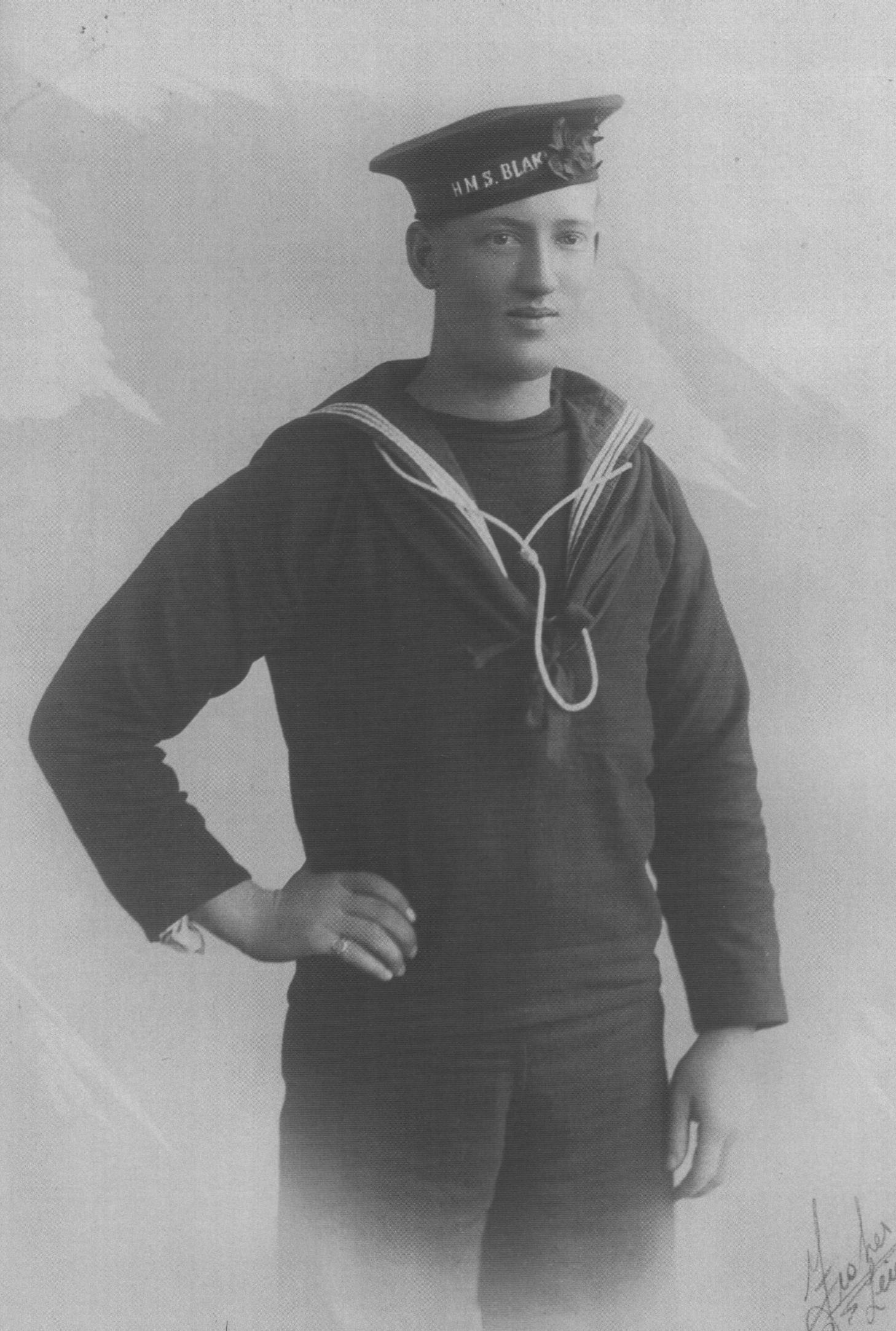
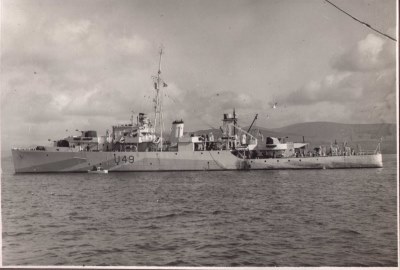
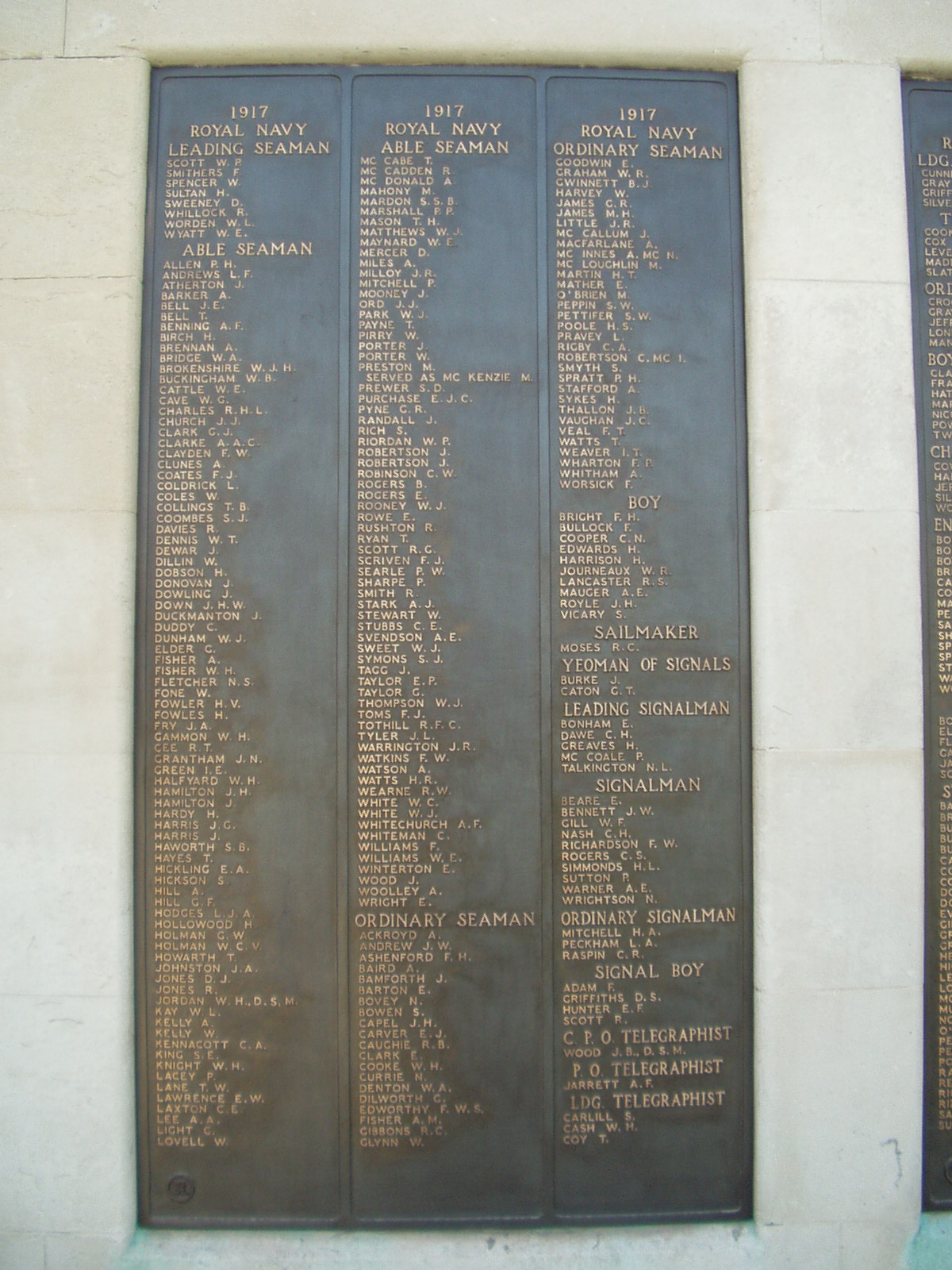
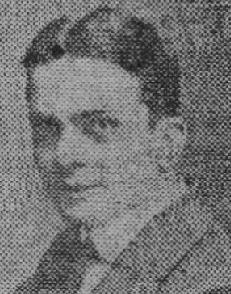
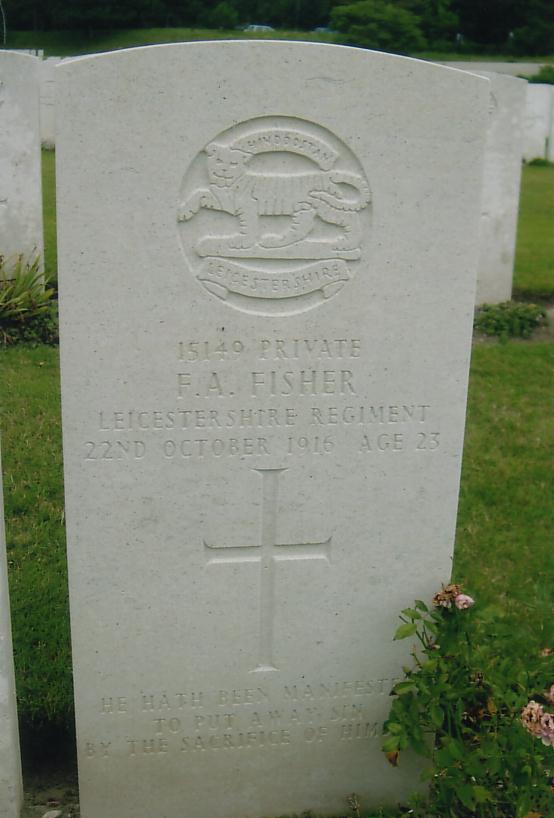
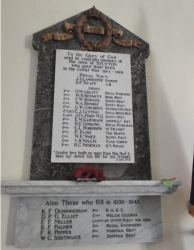
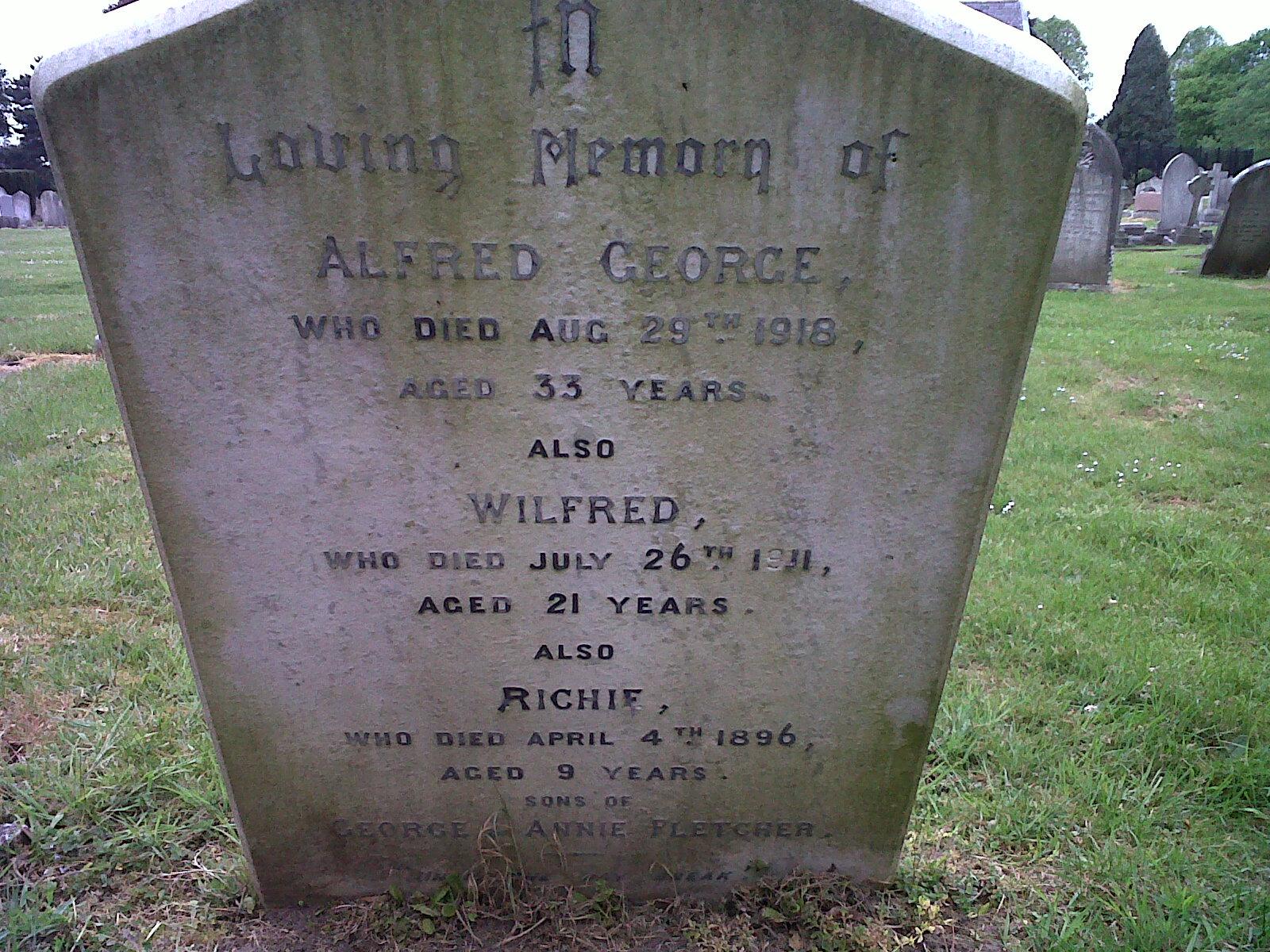
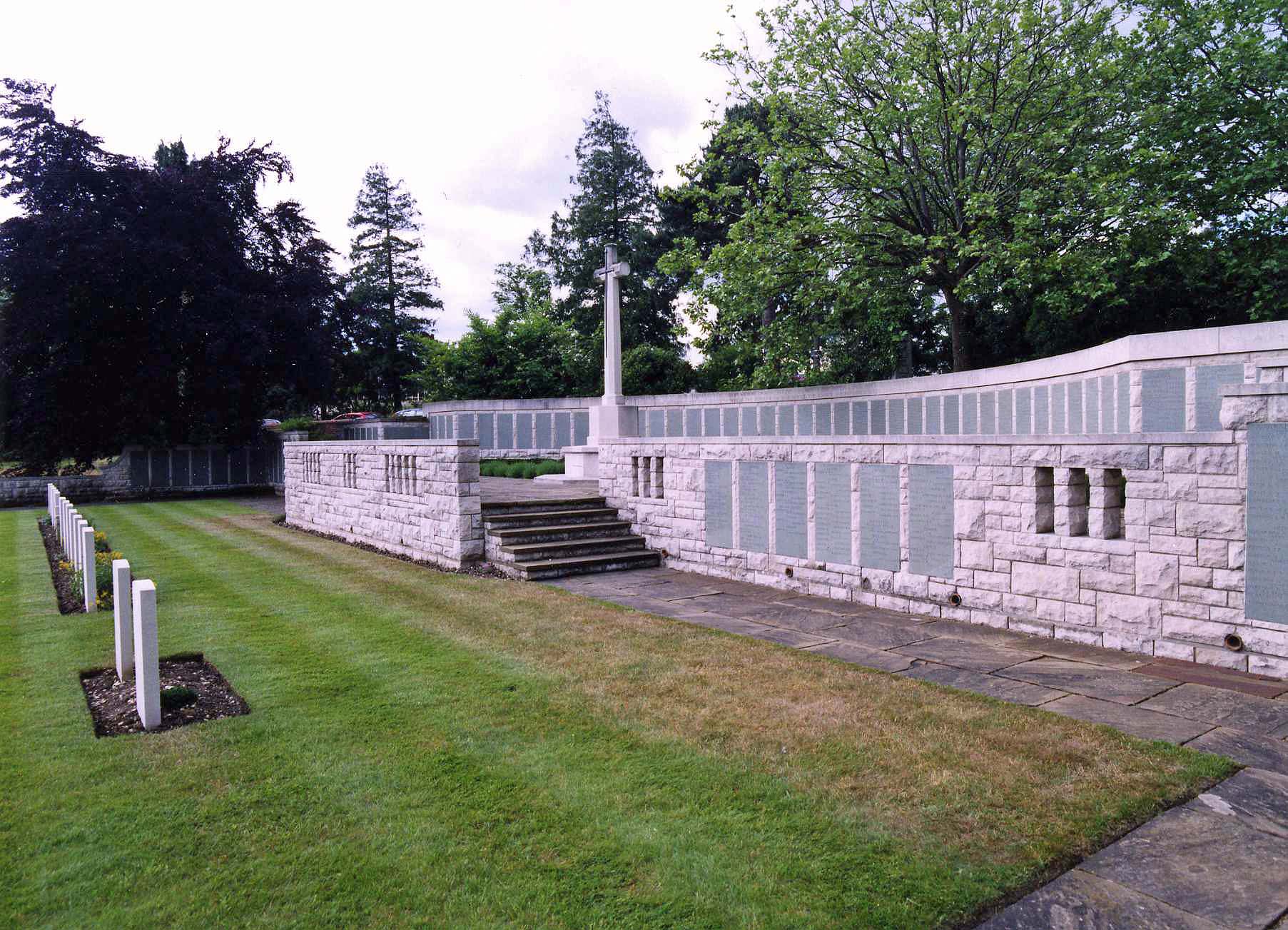
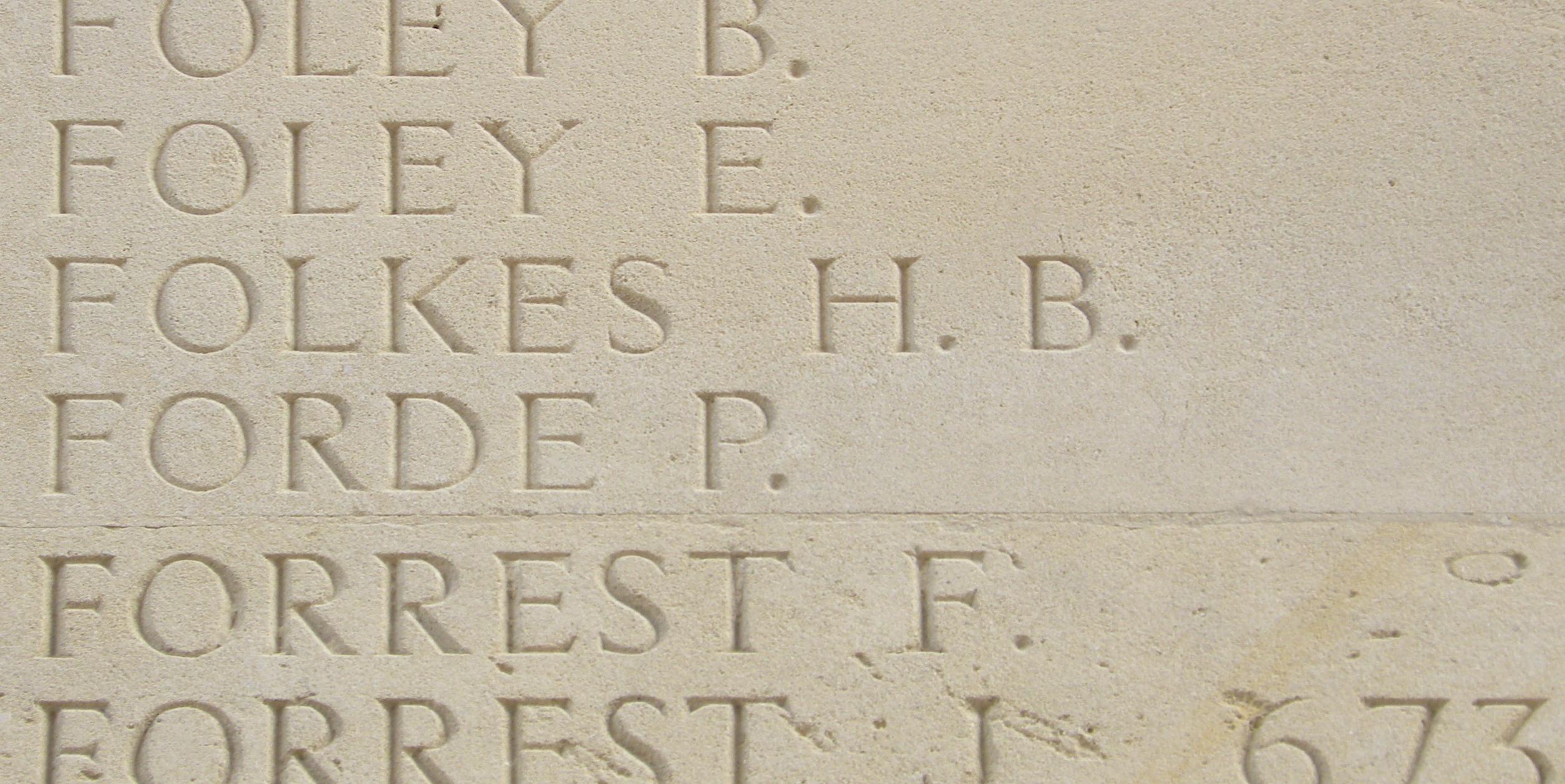
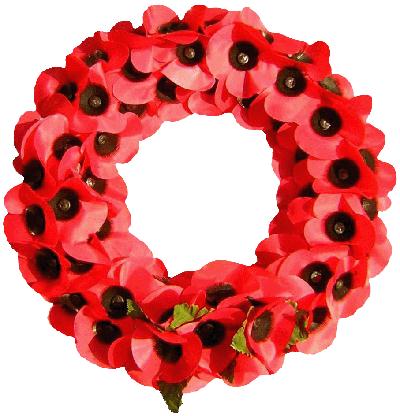
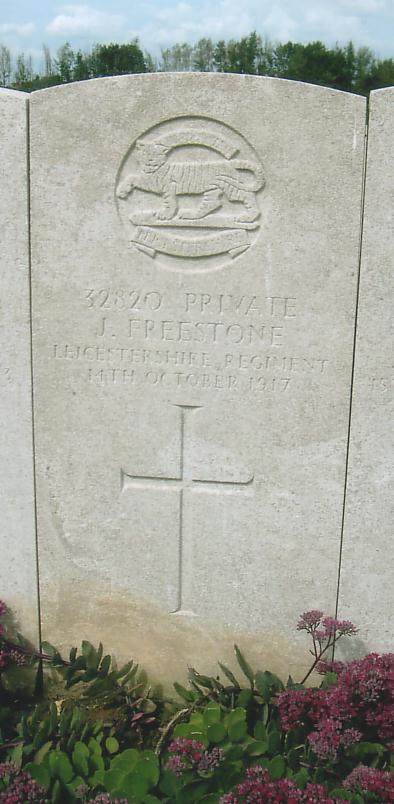
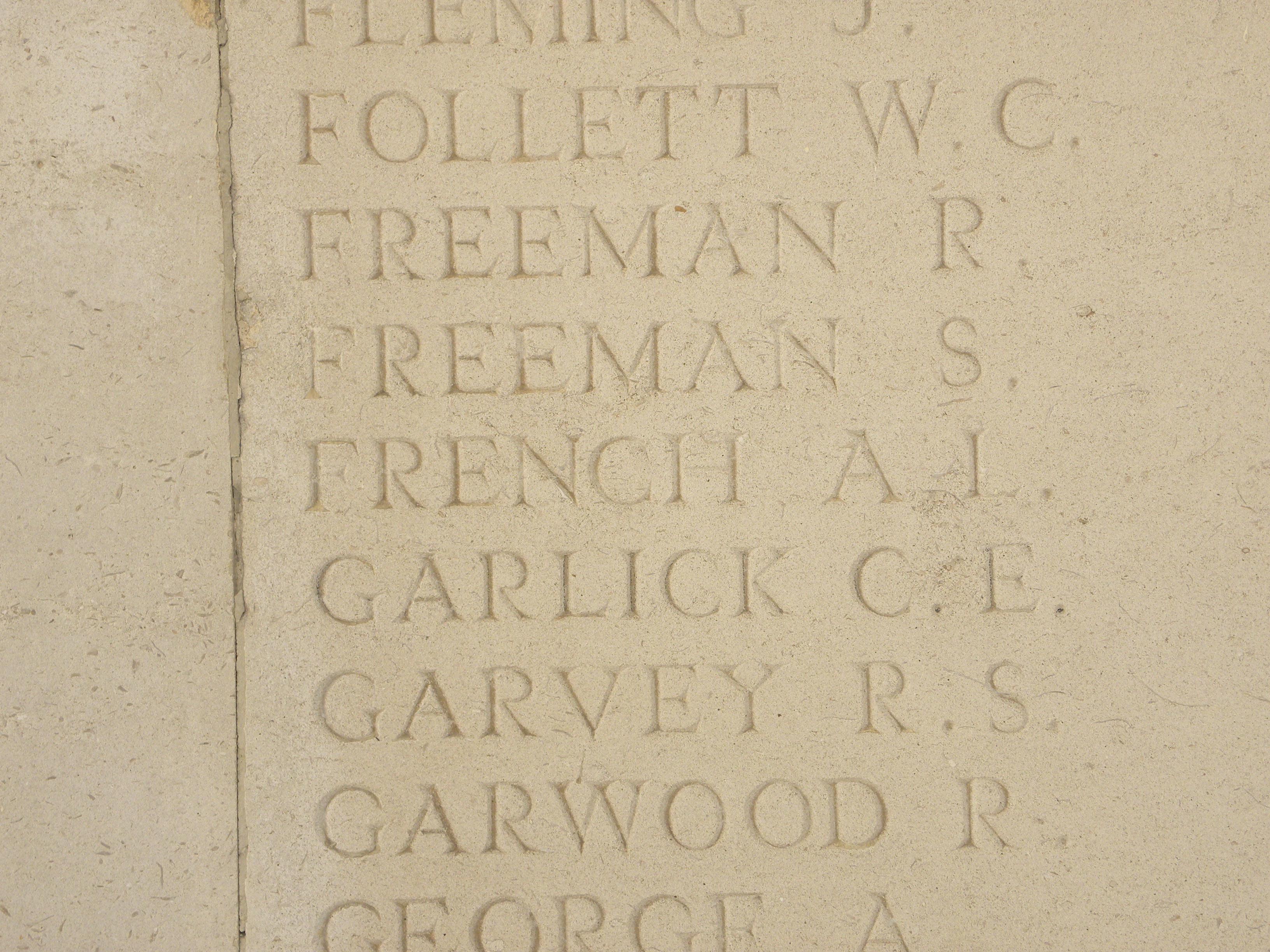
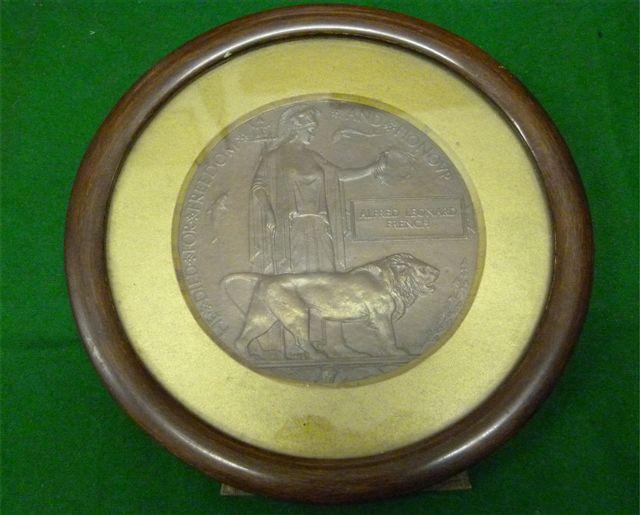
_British_Battleship.jpg)
